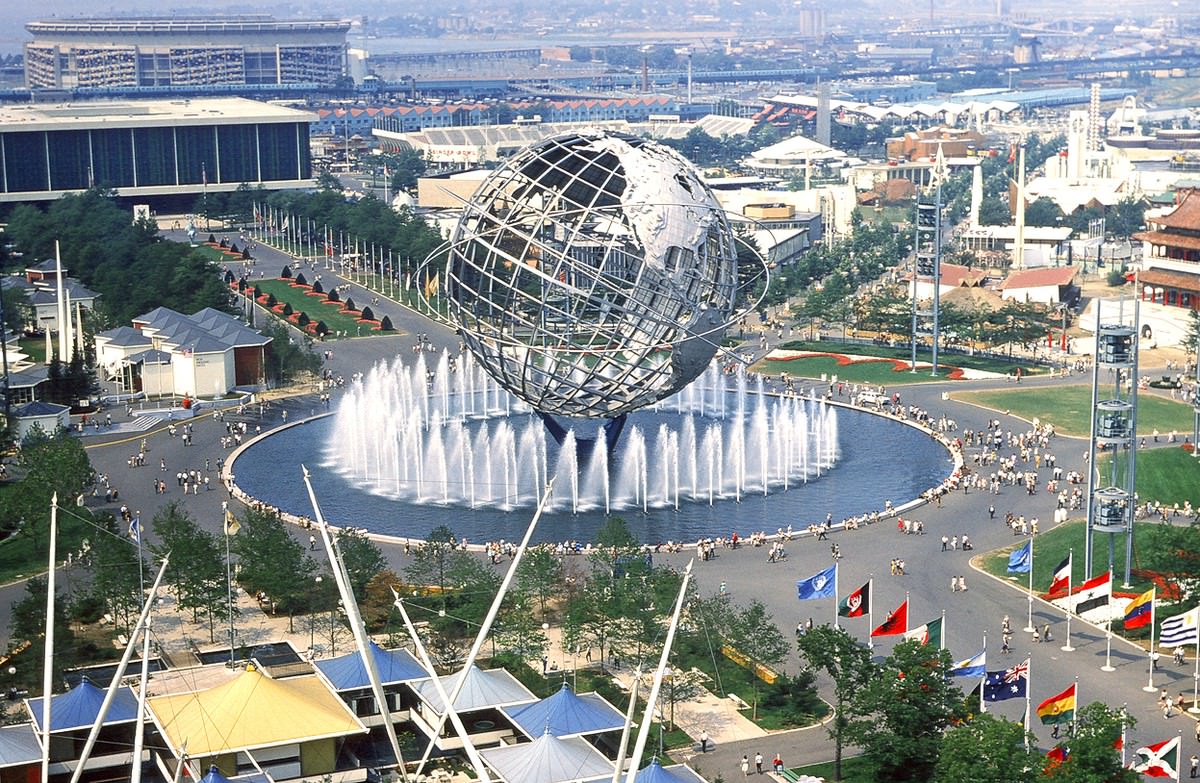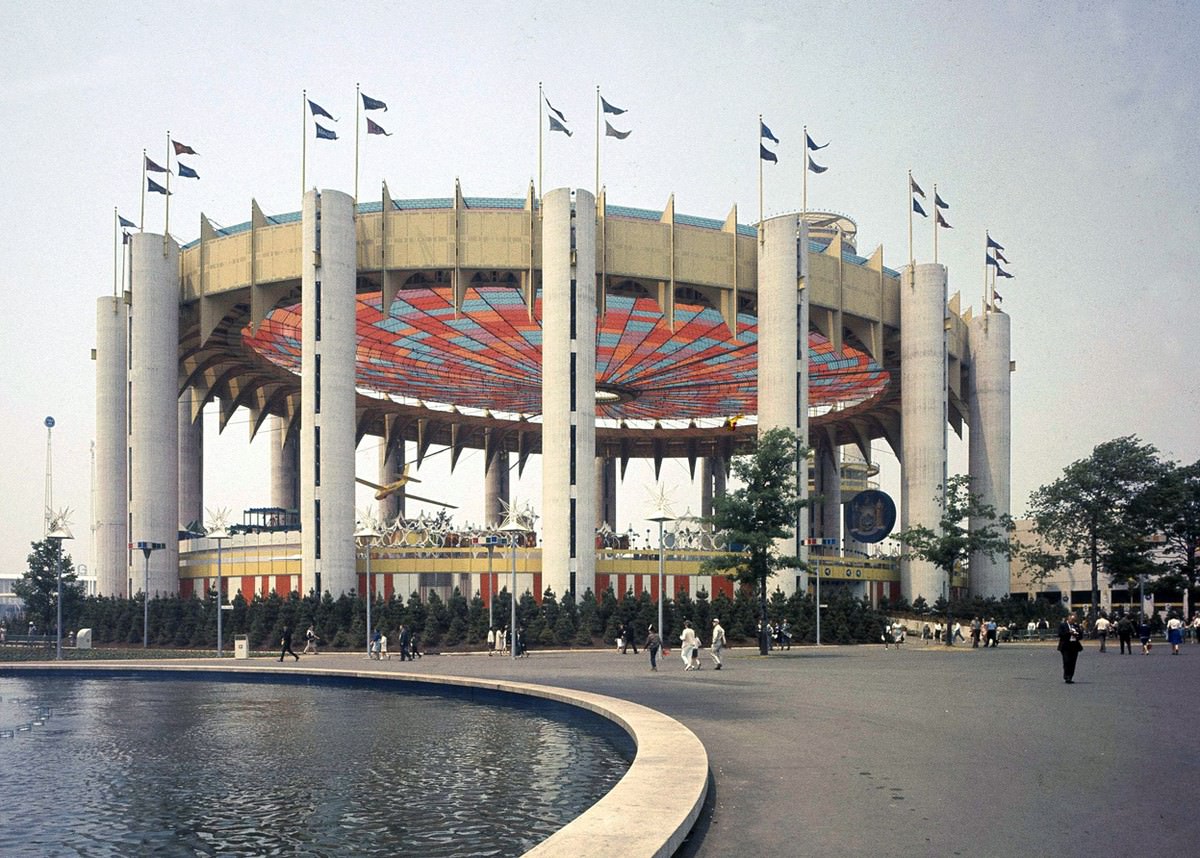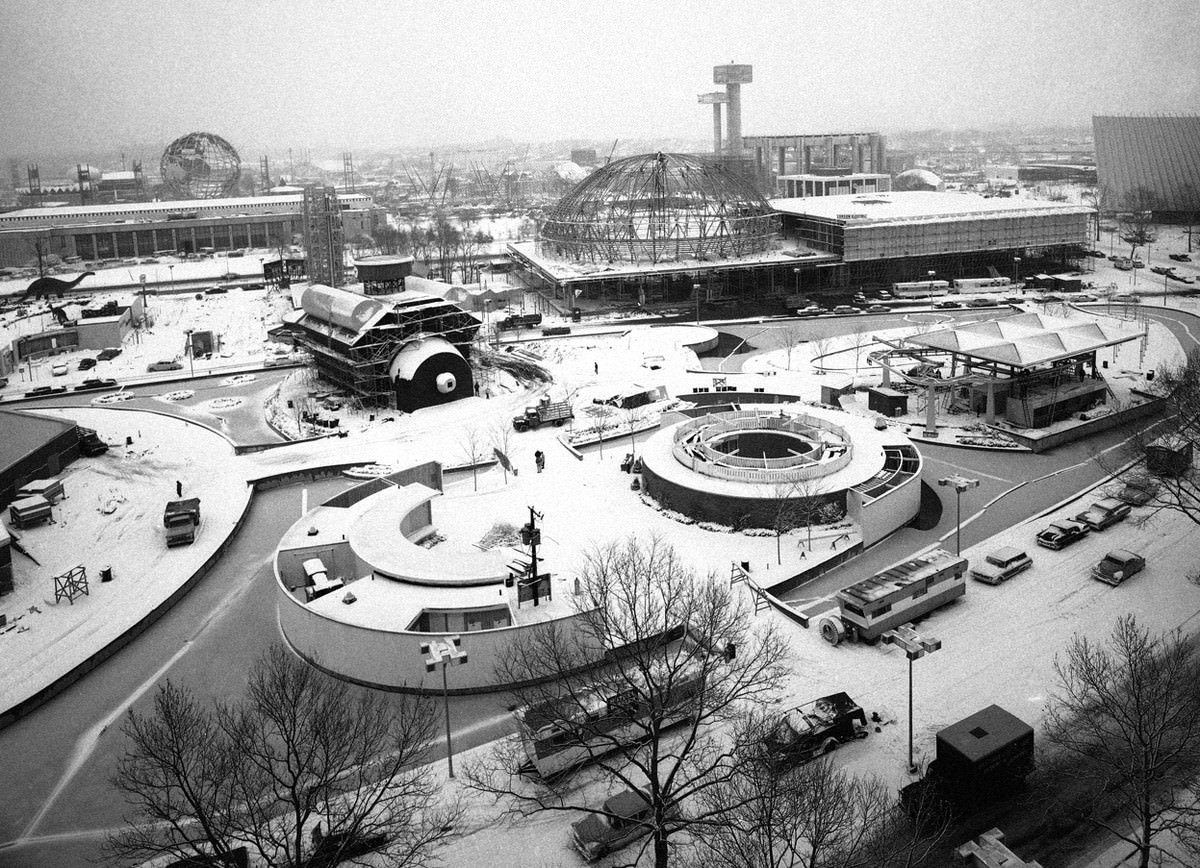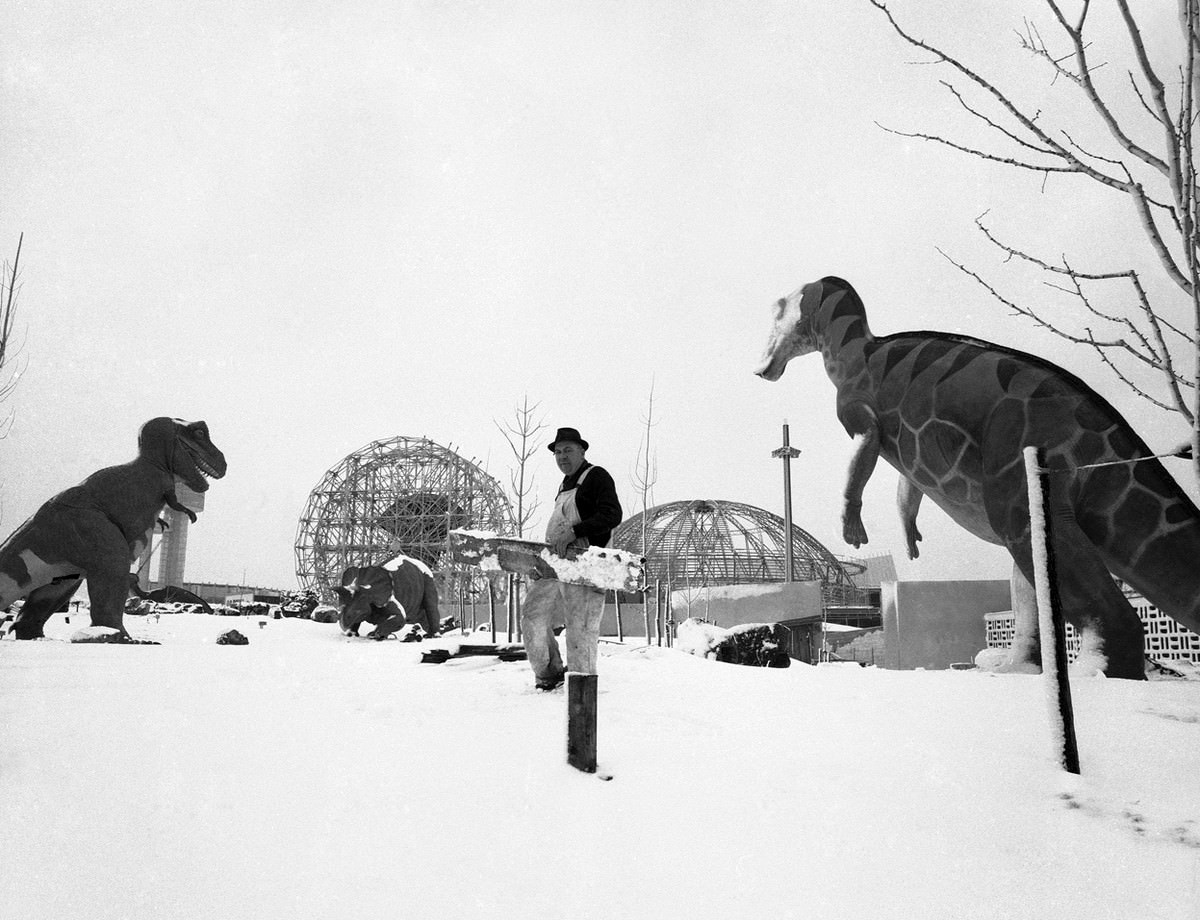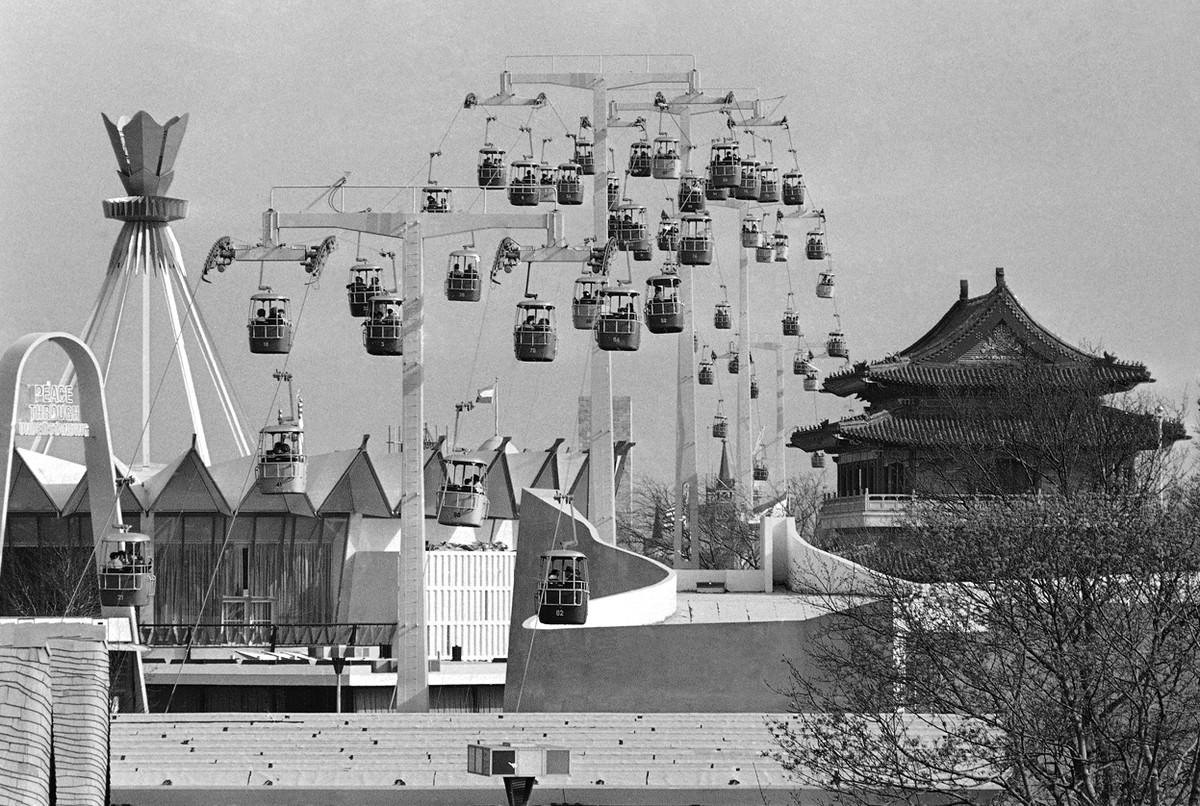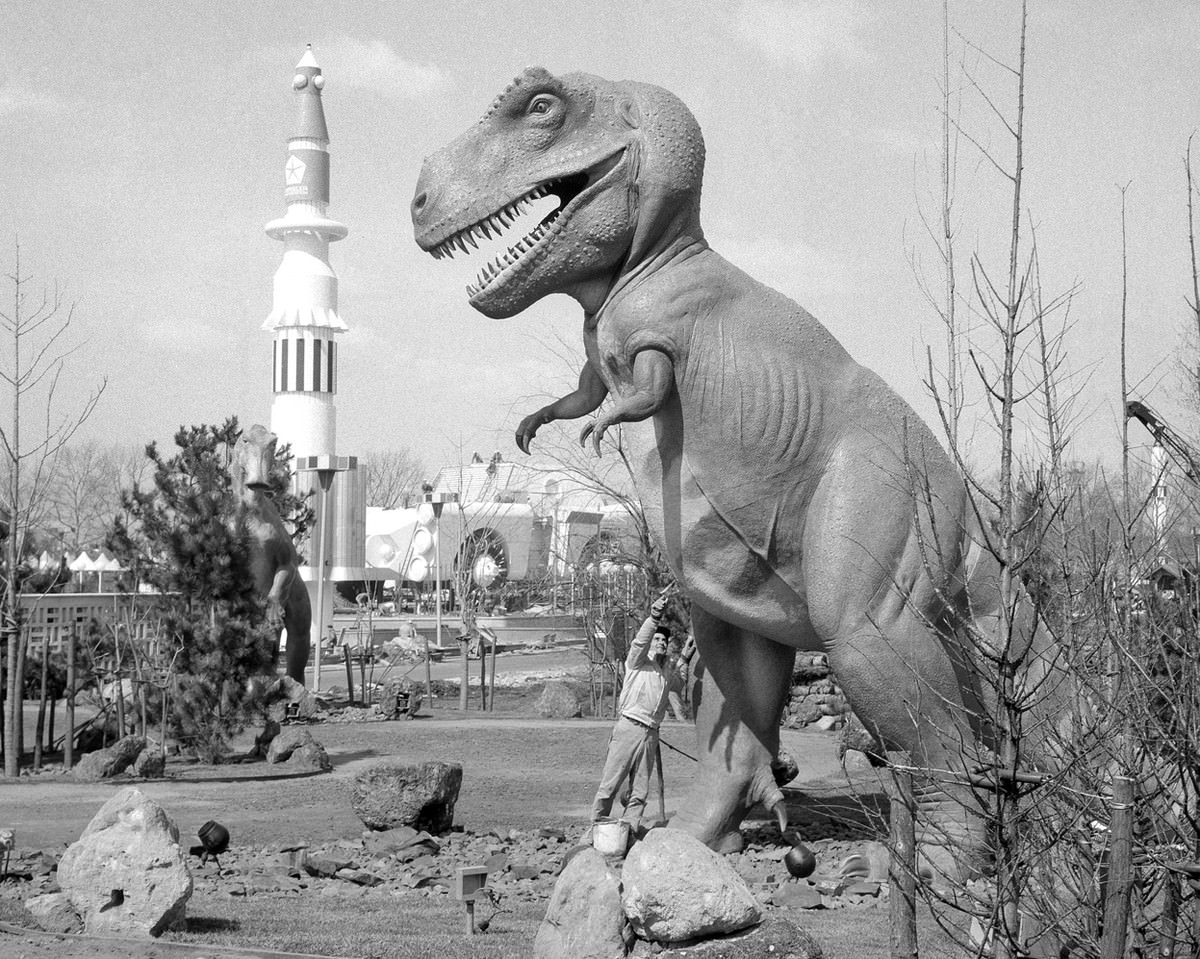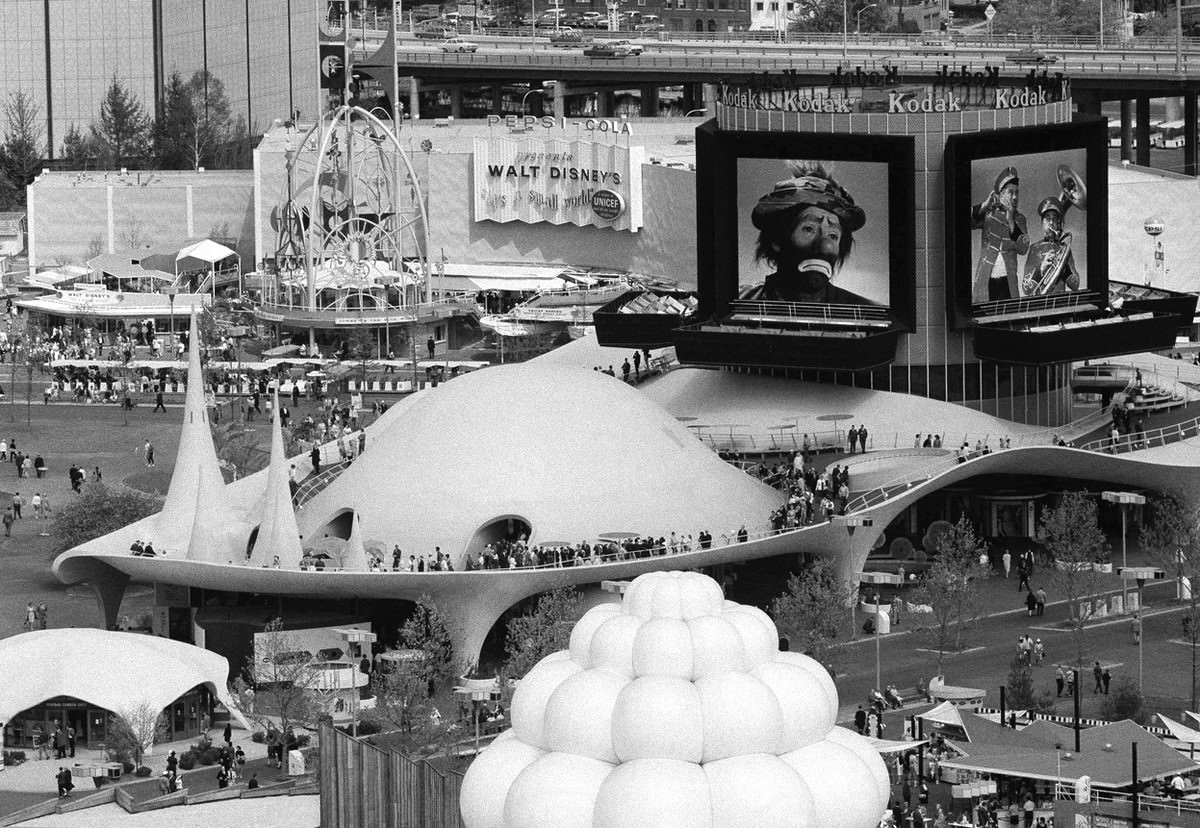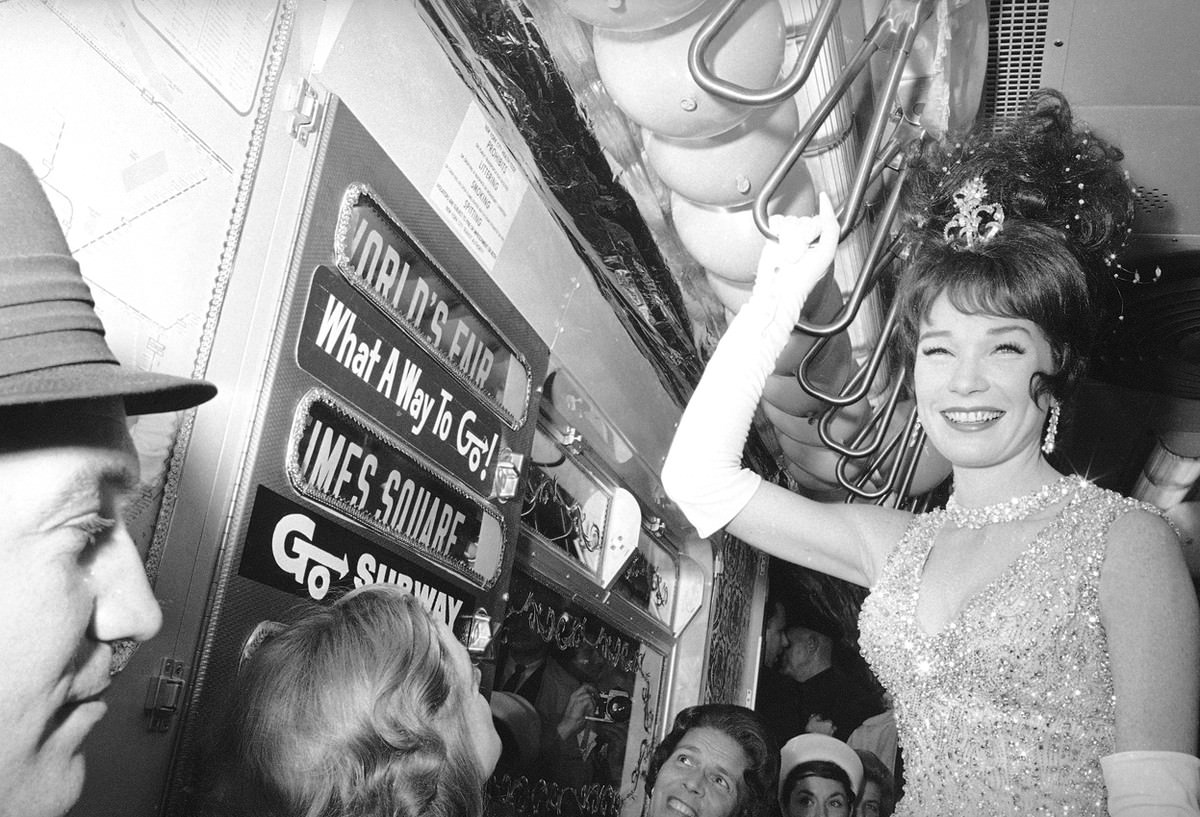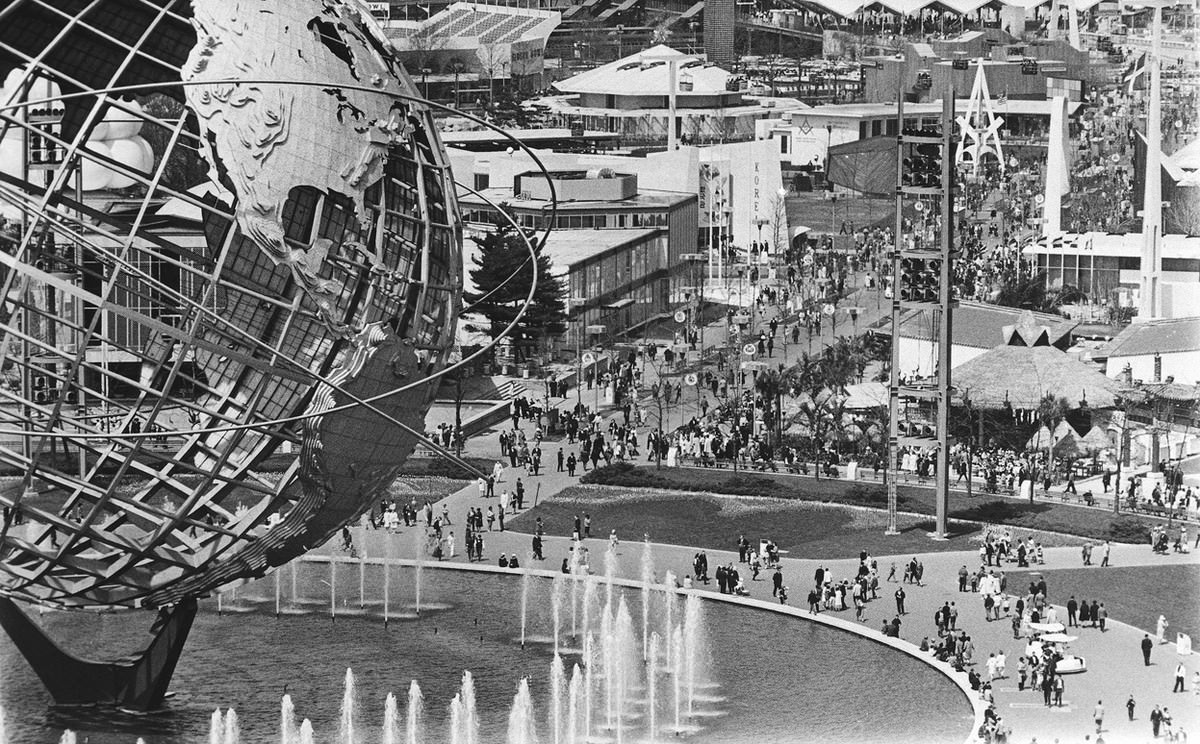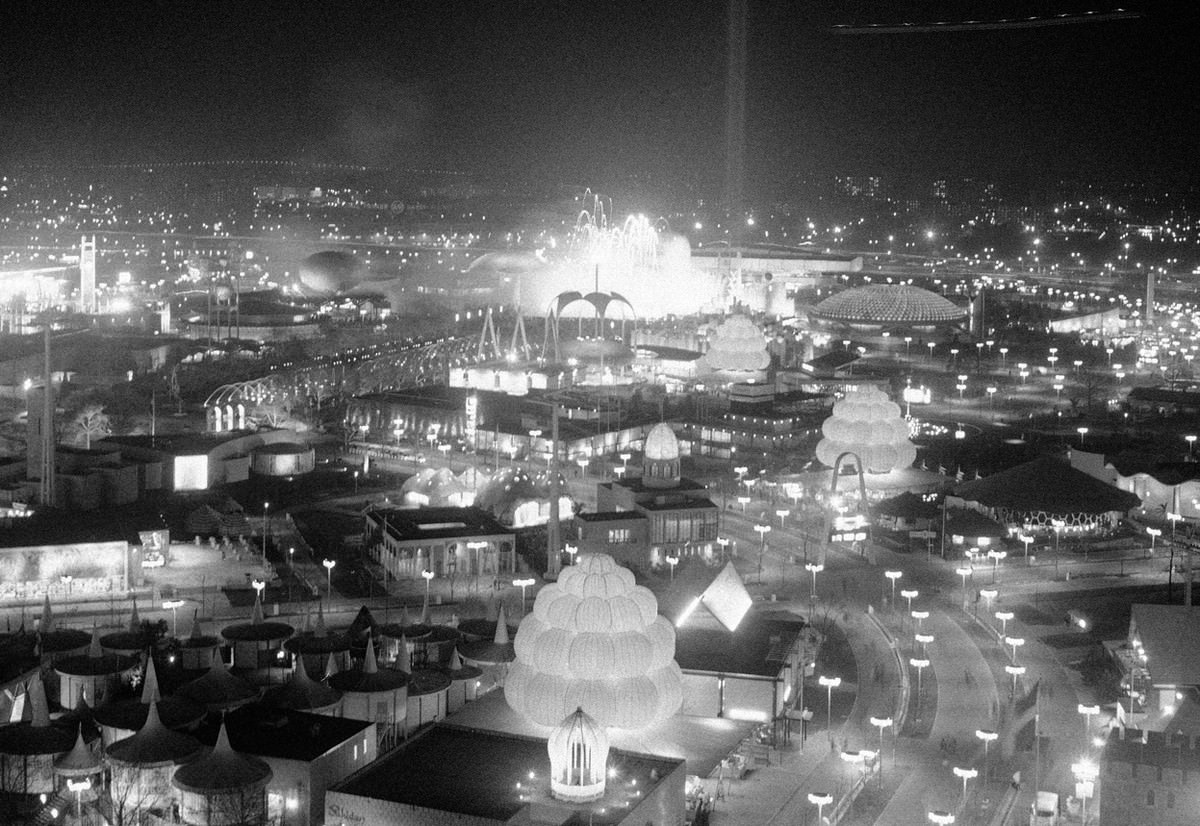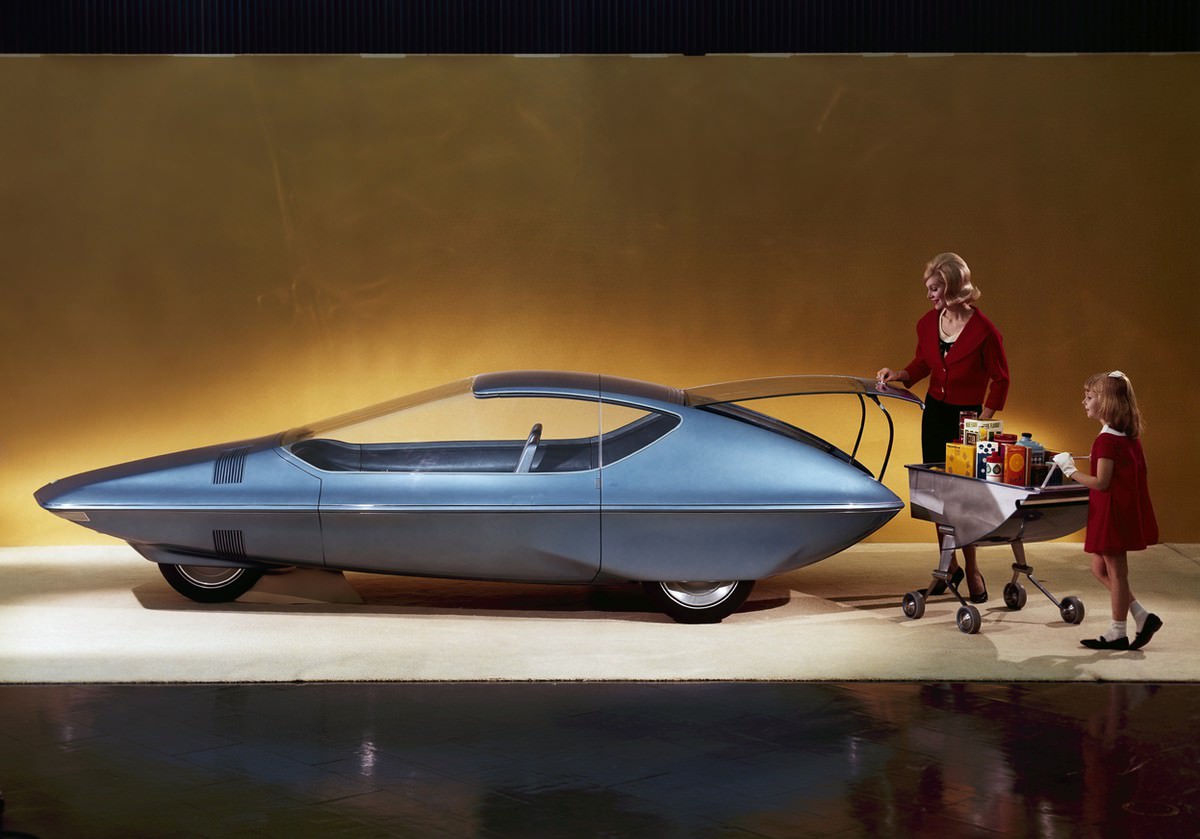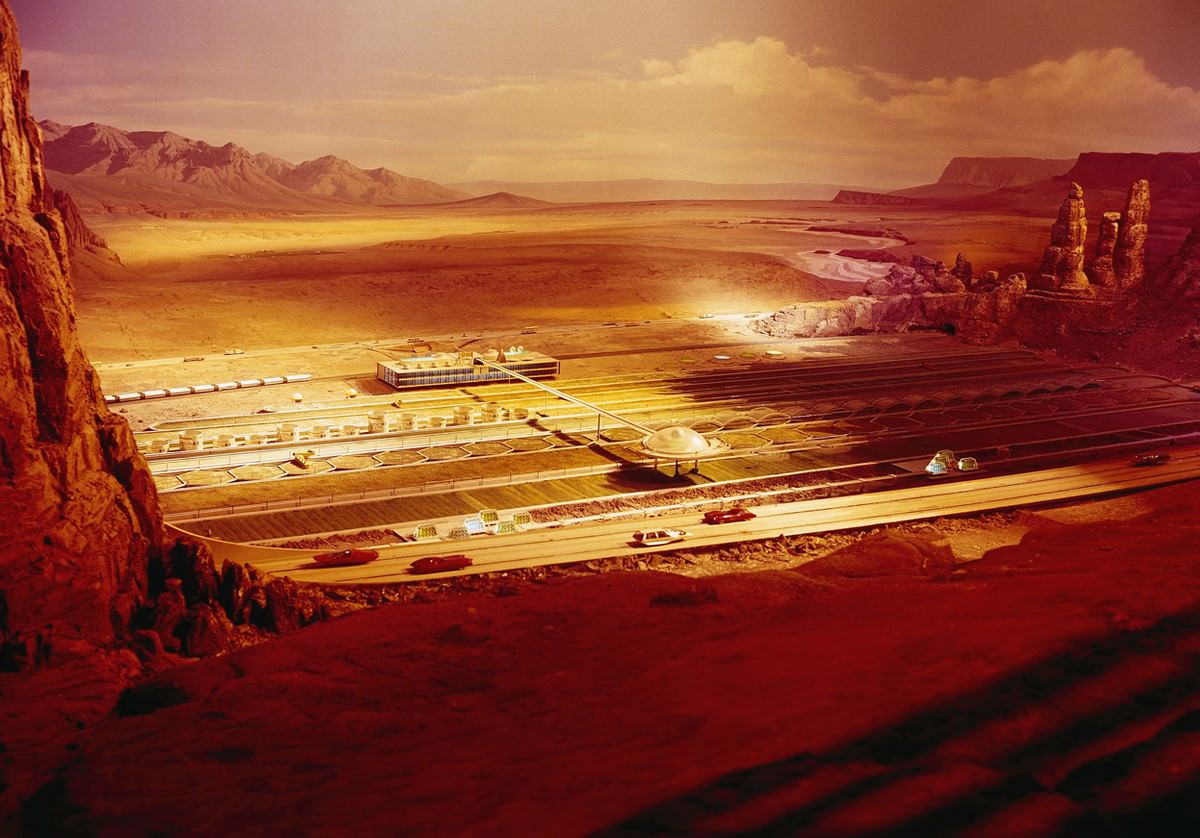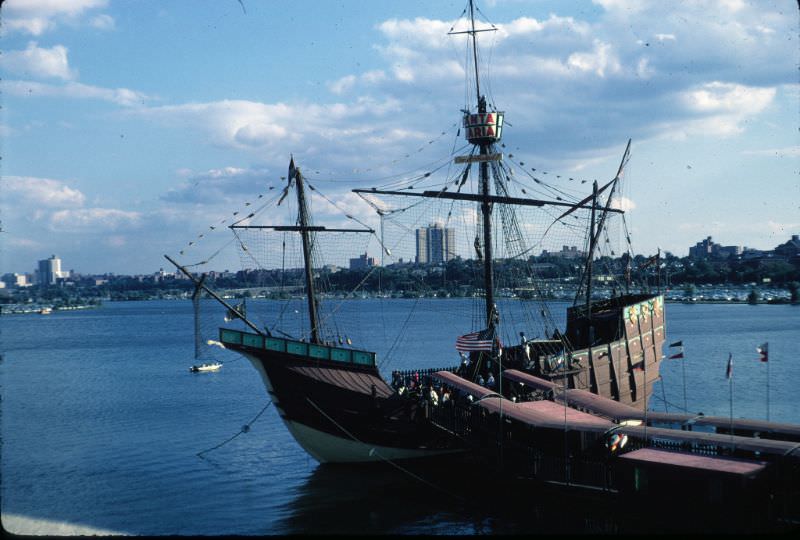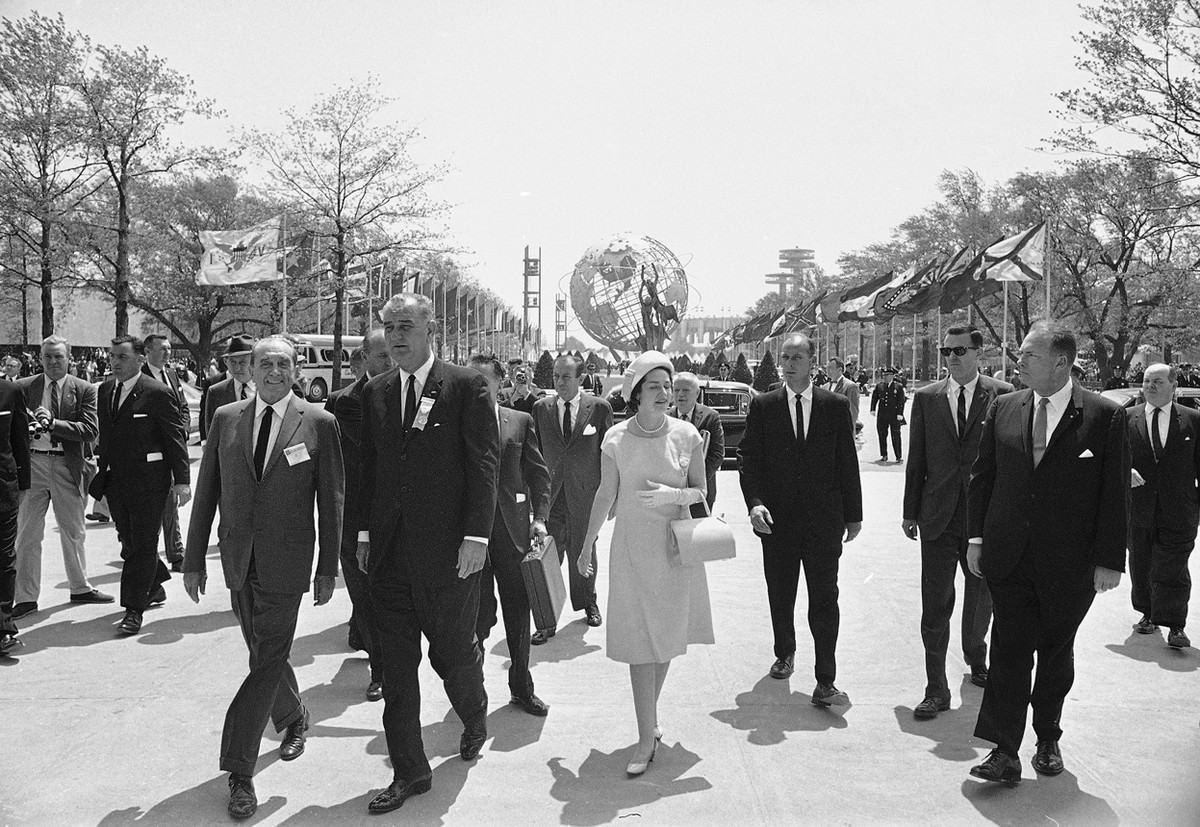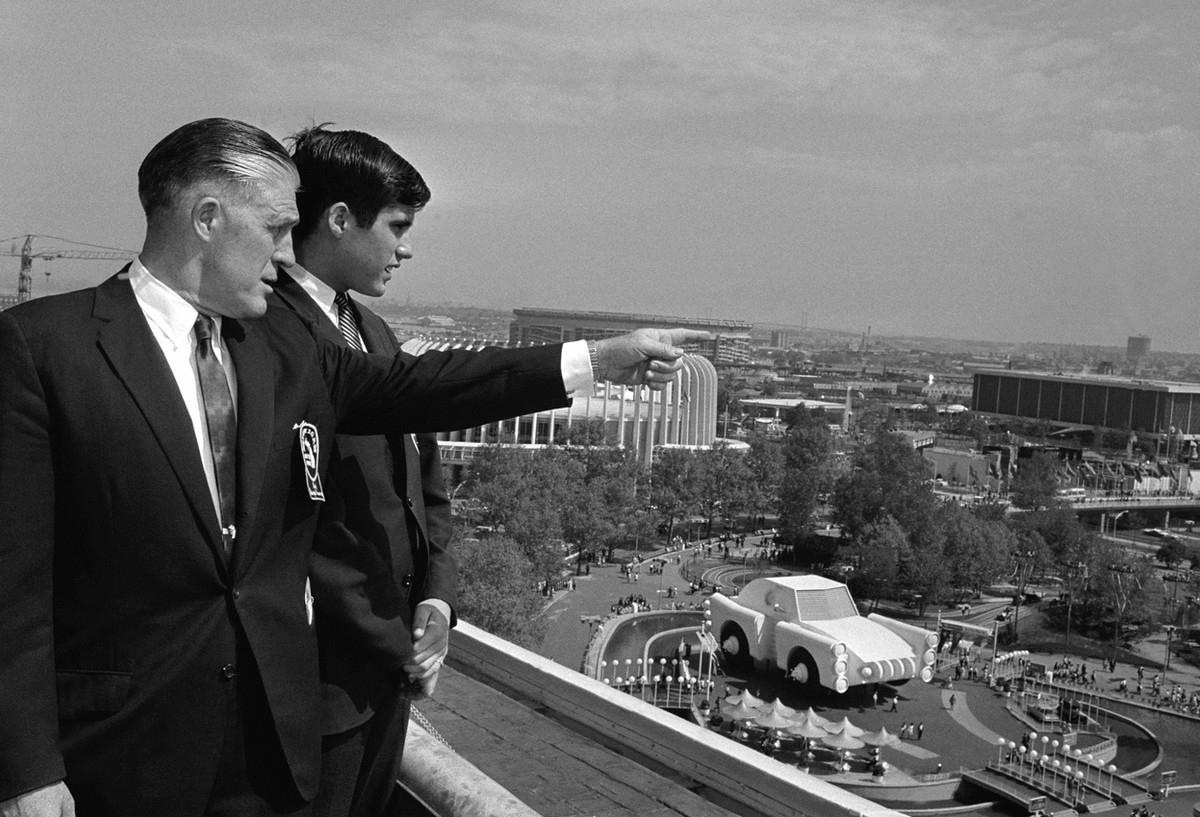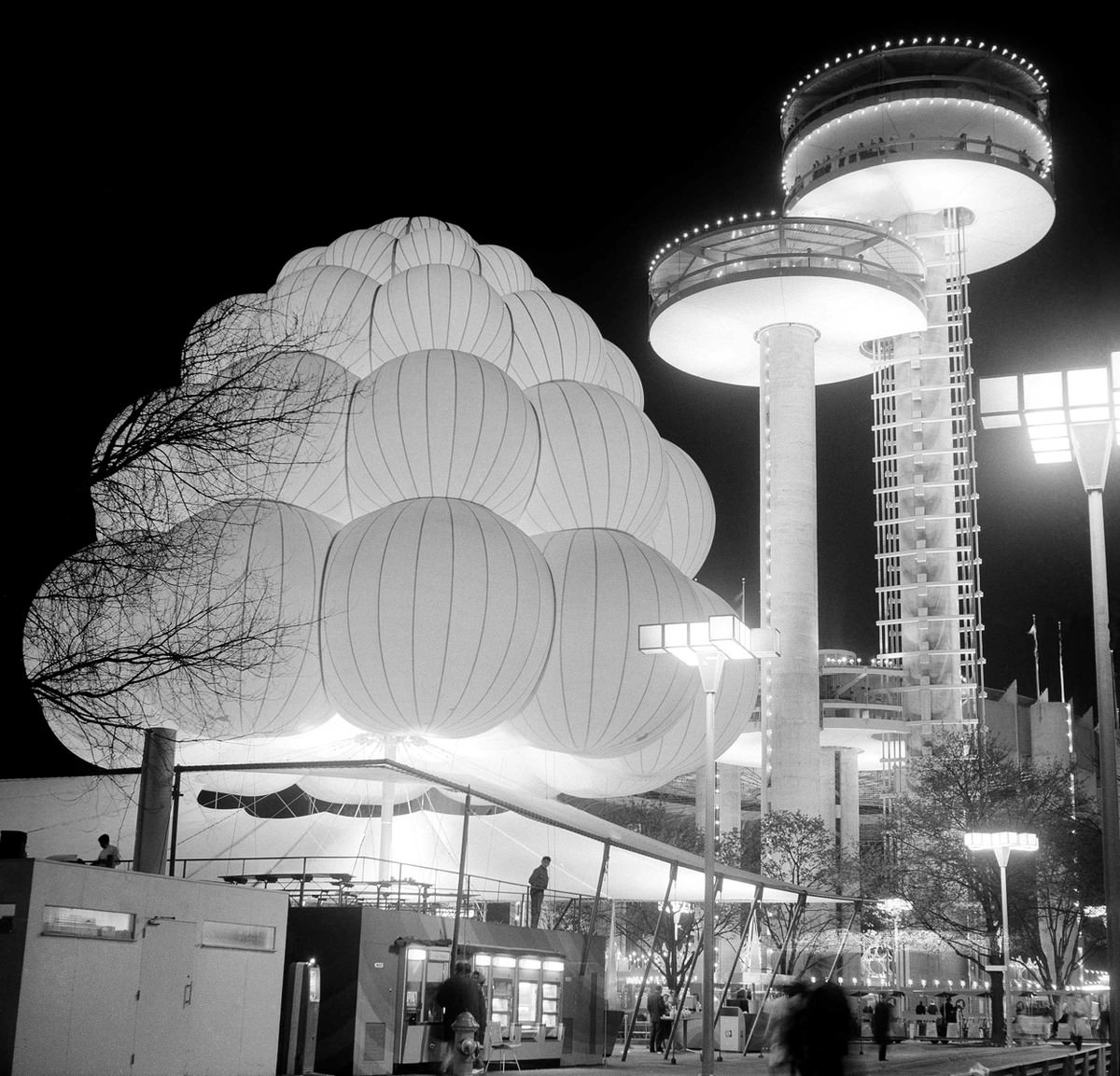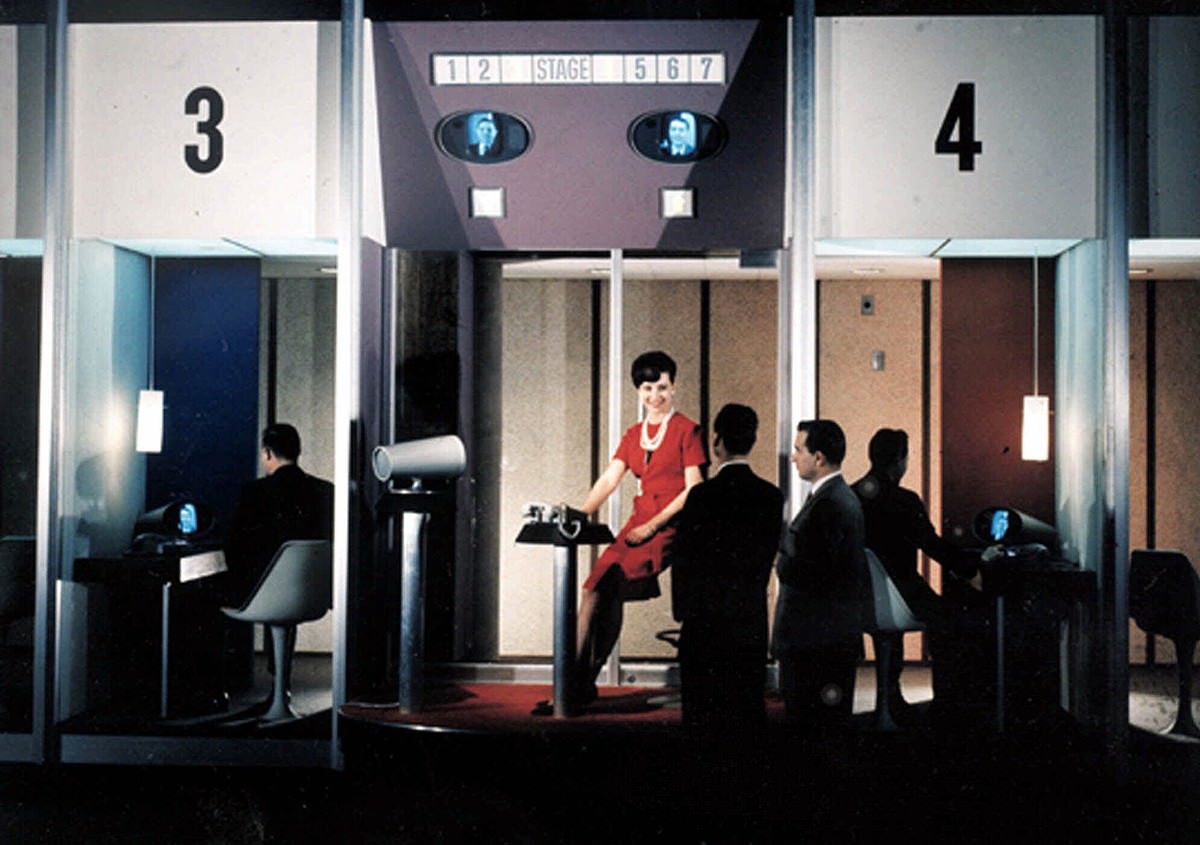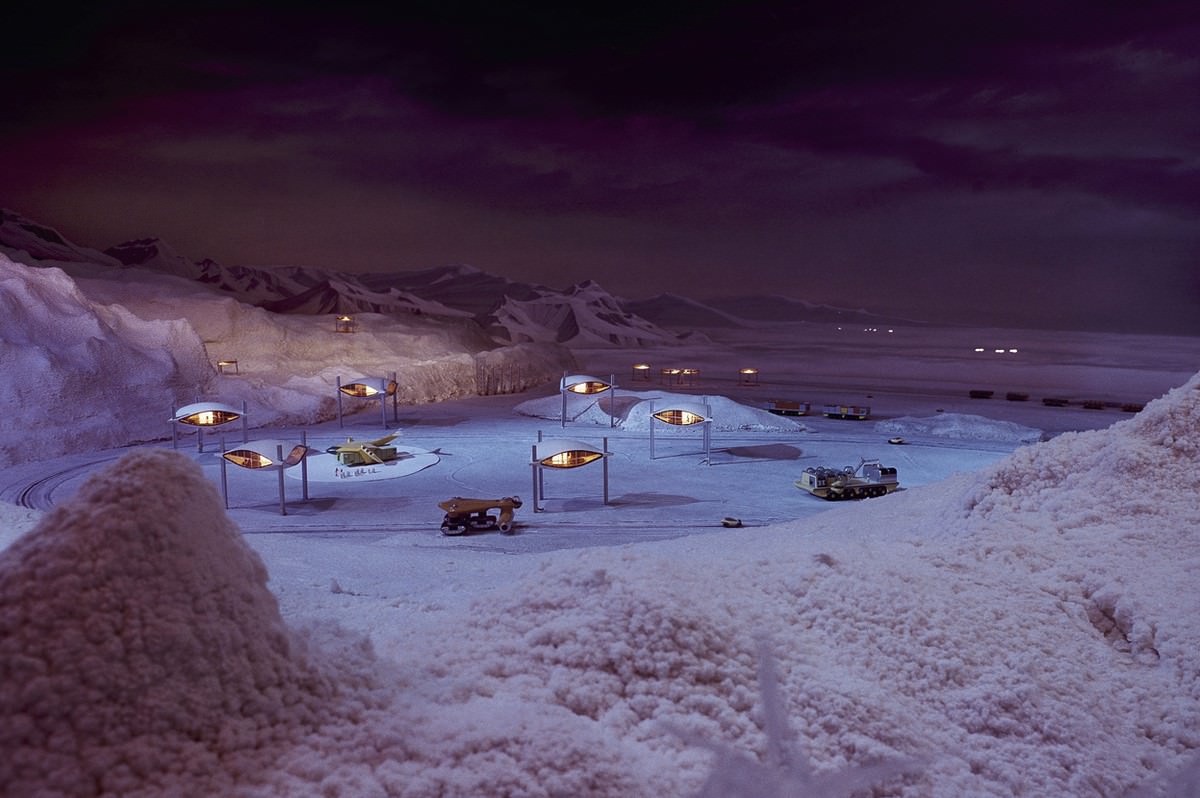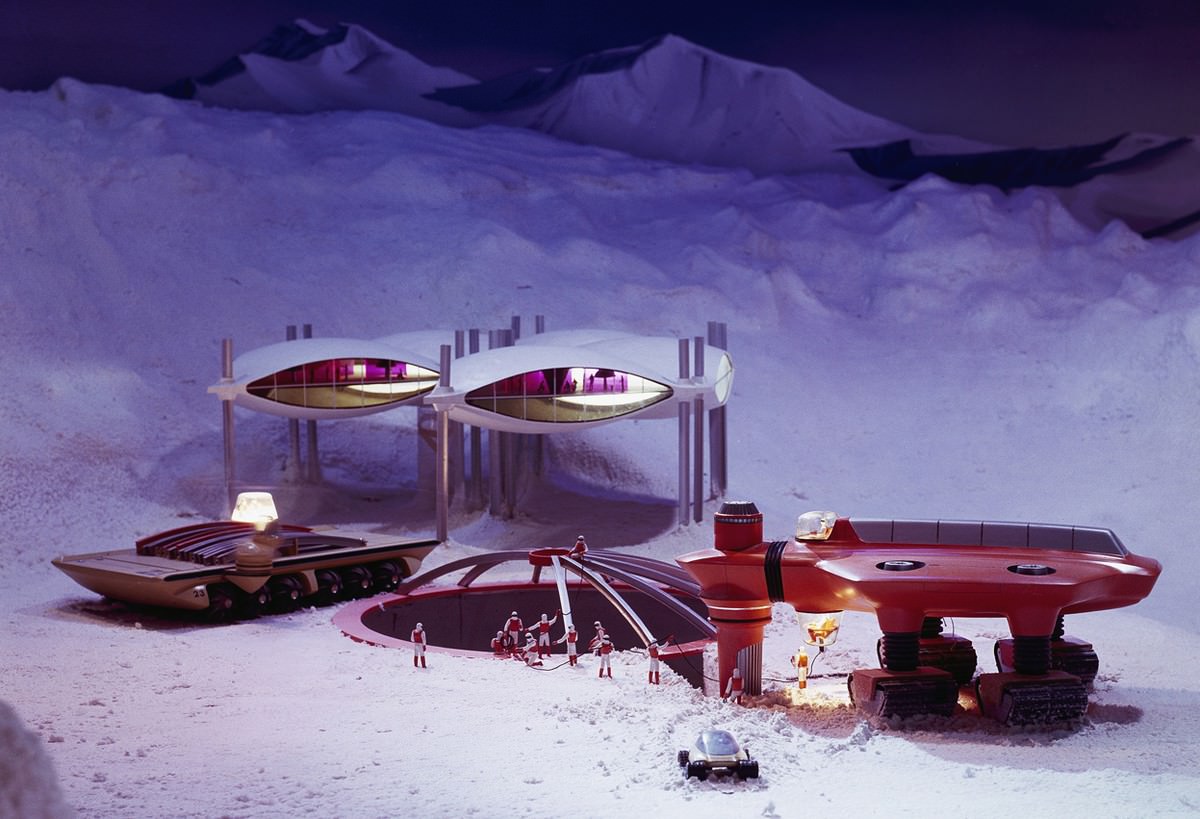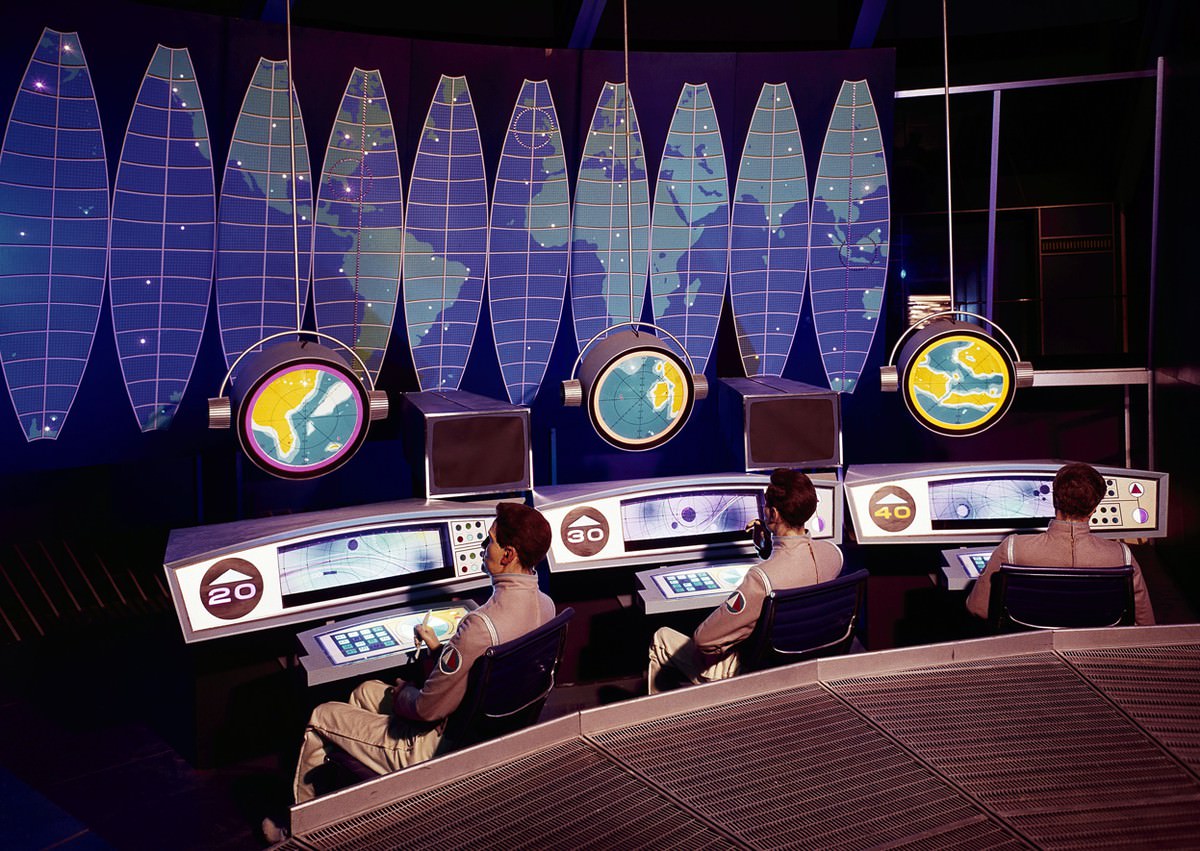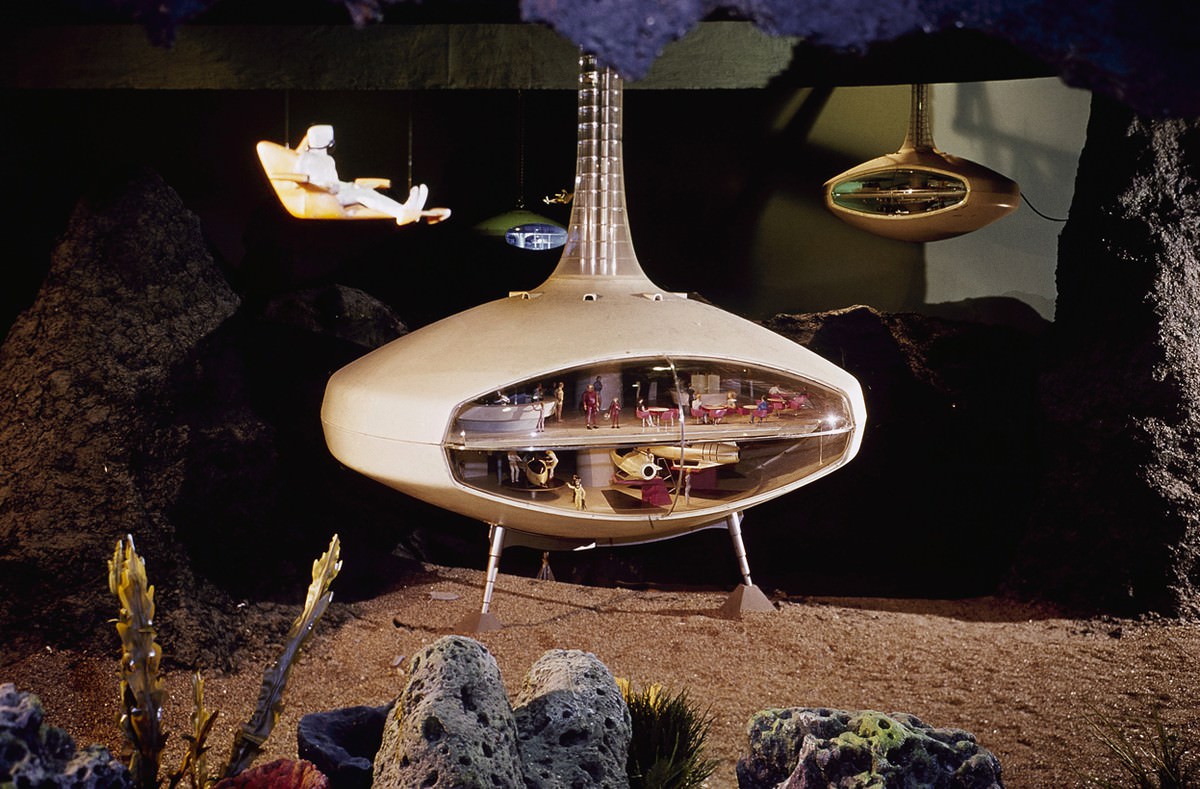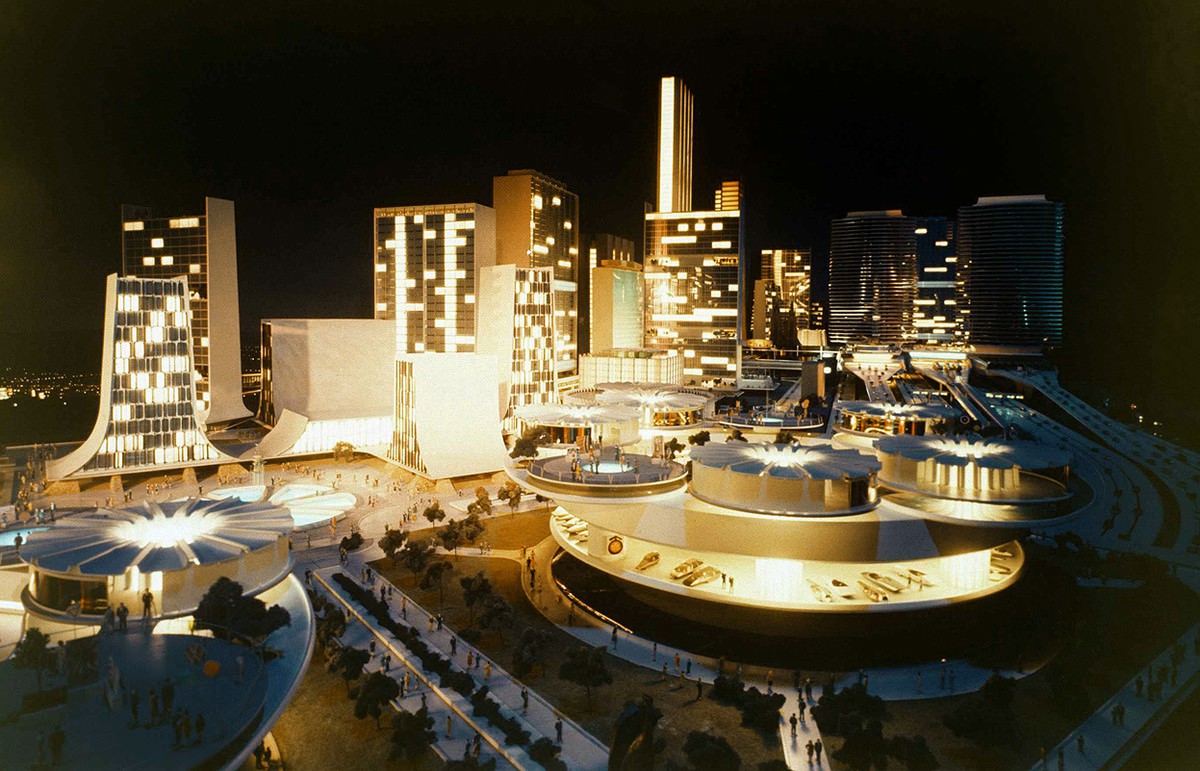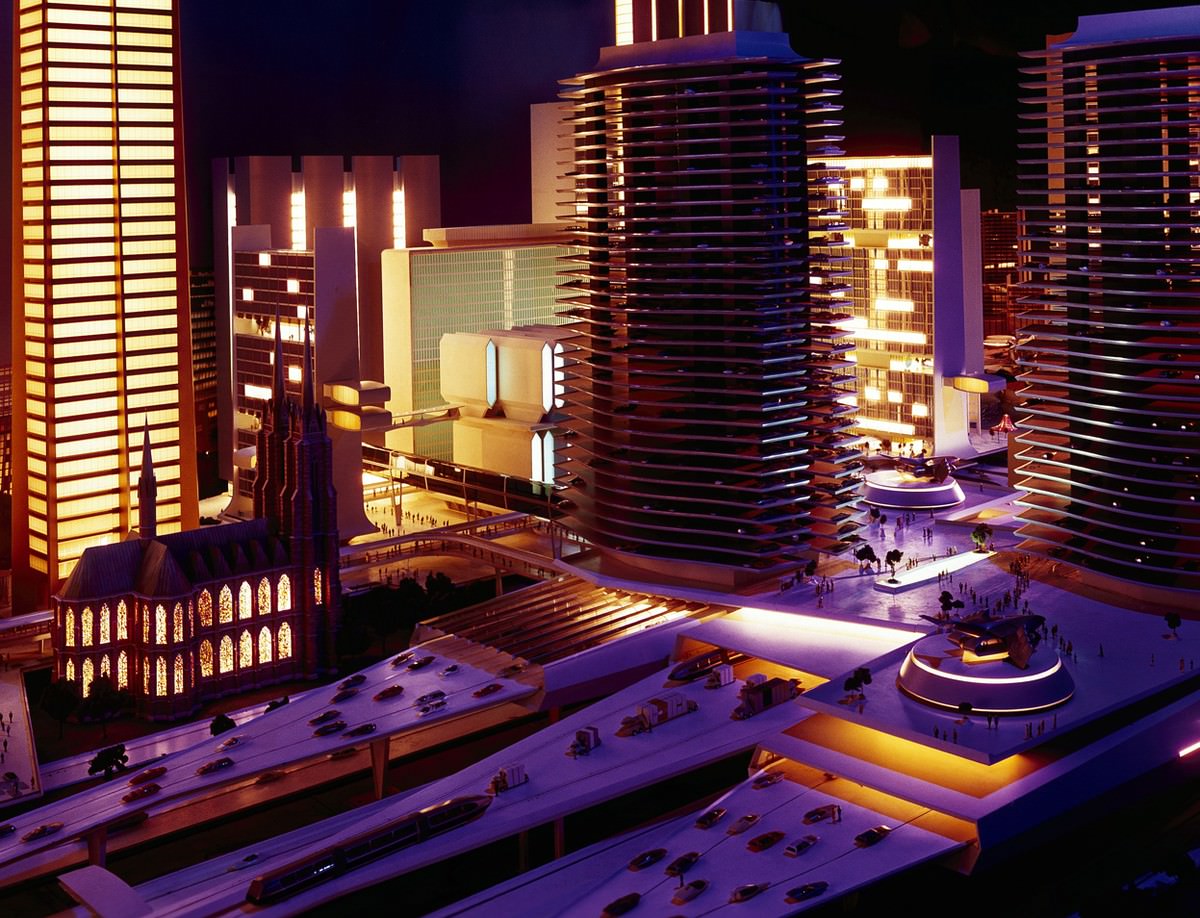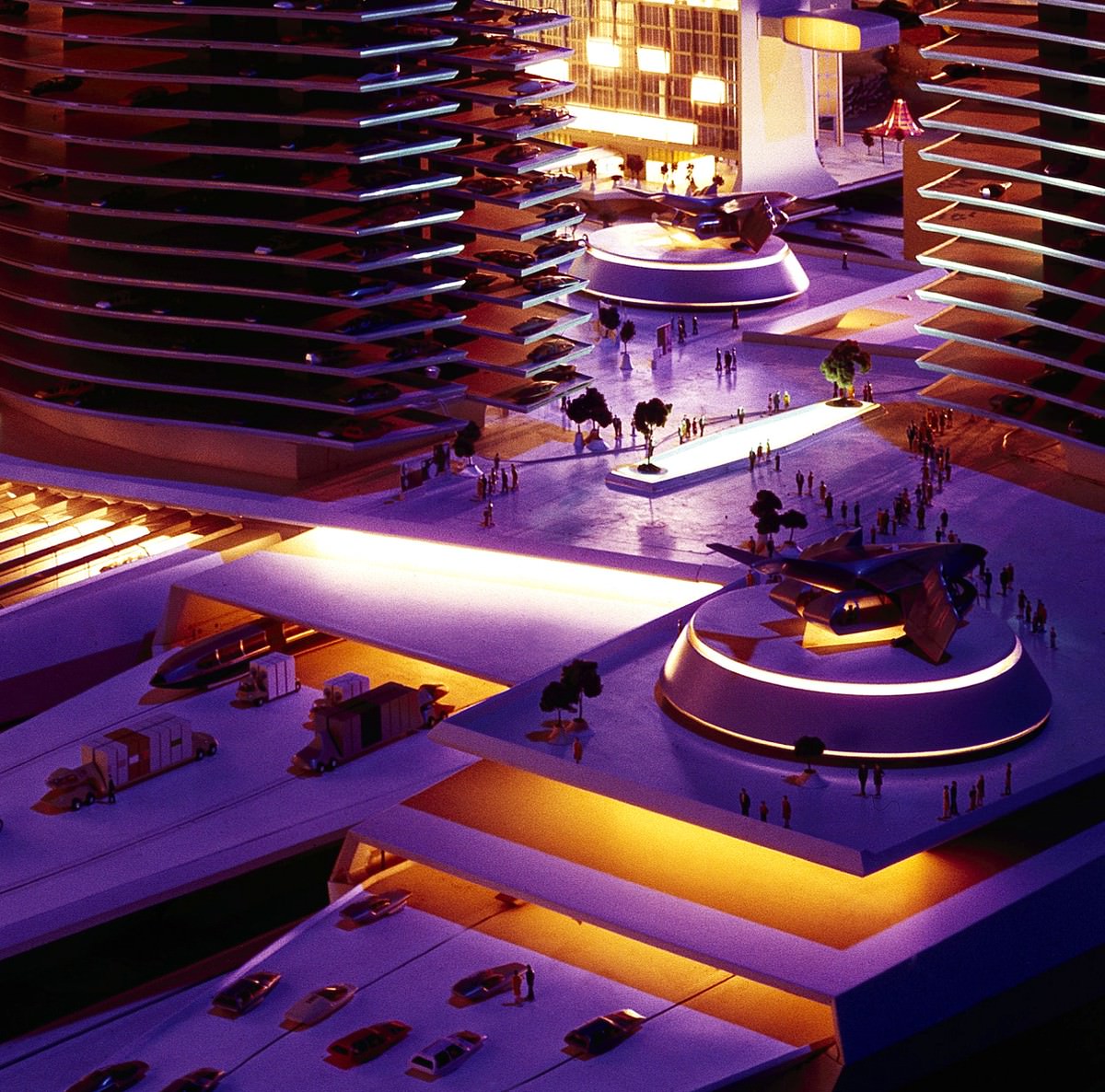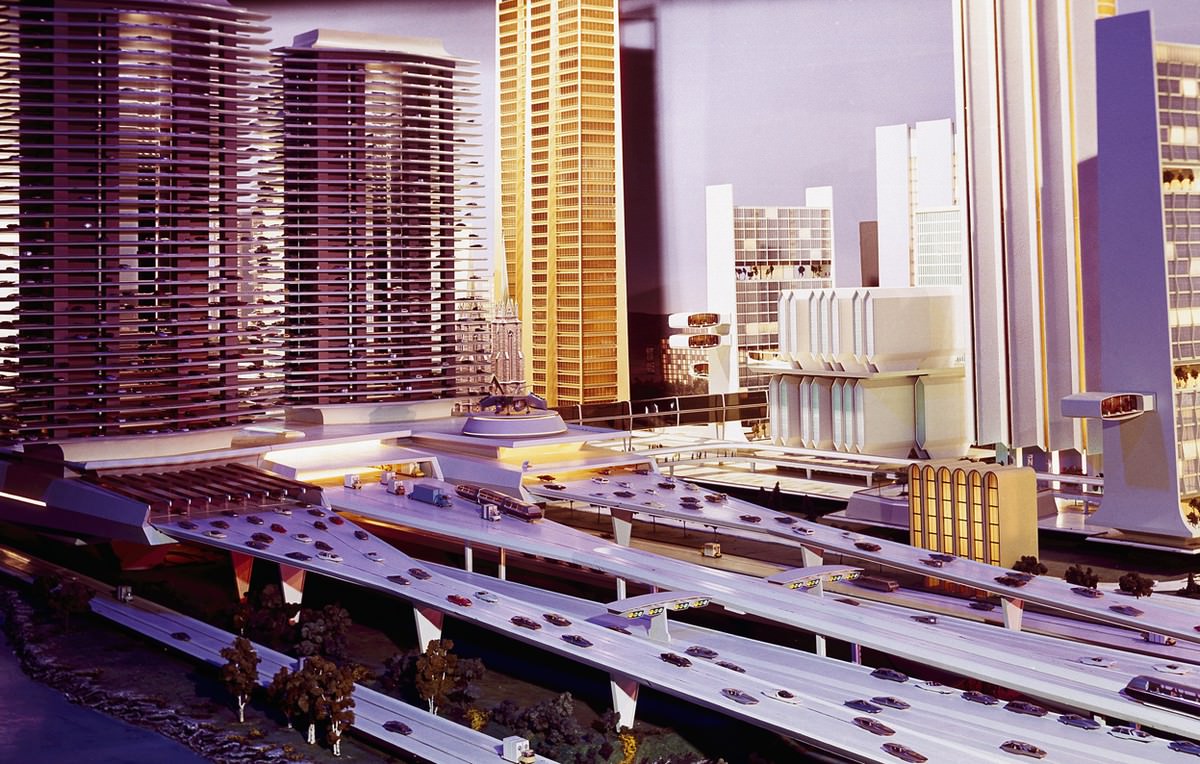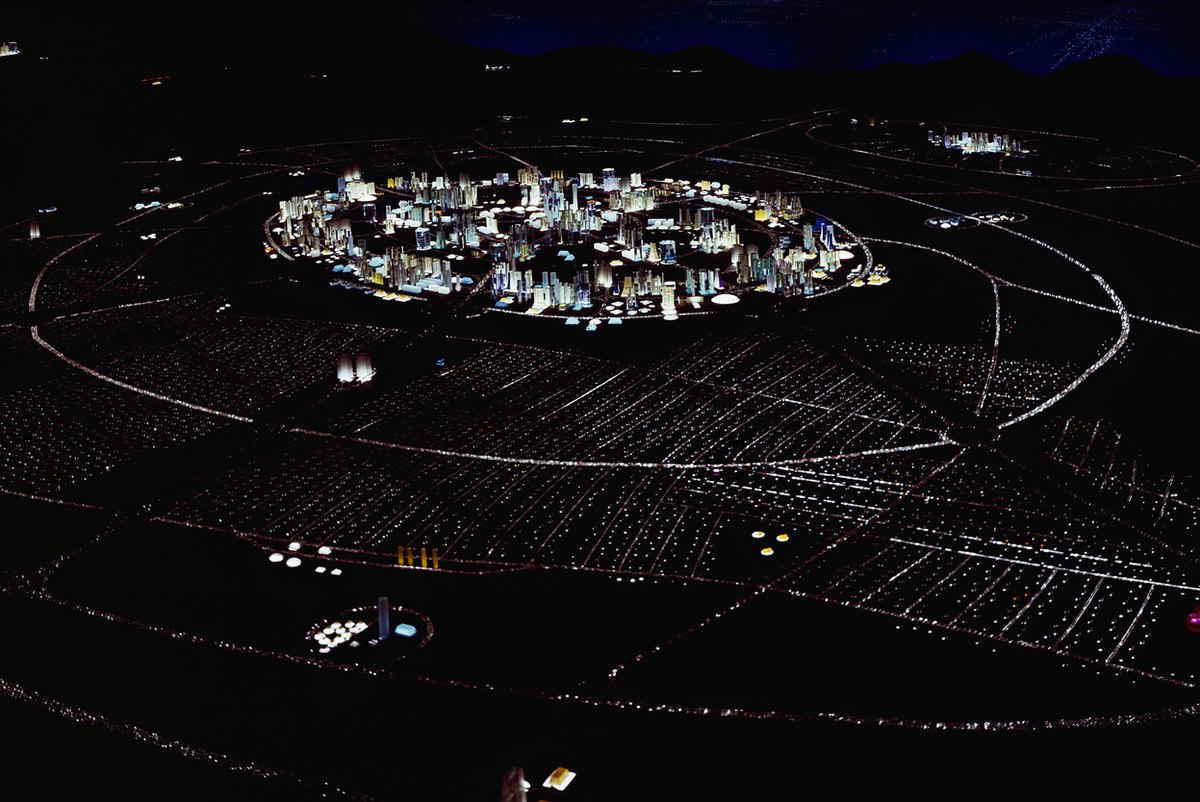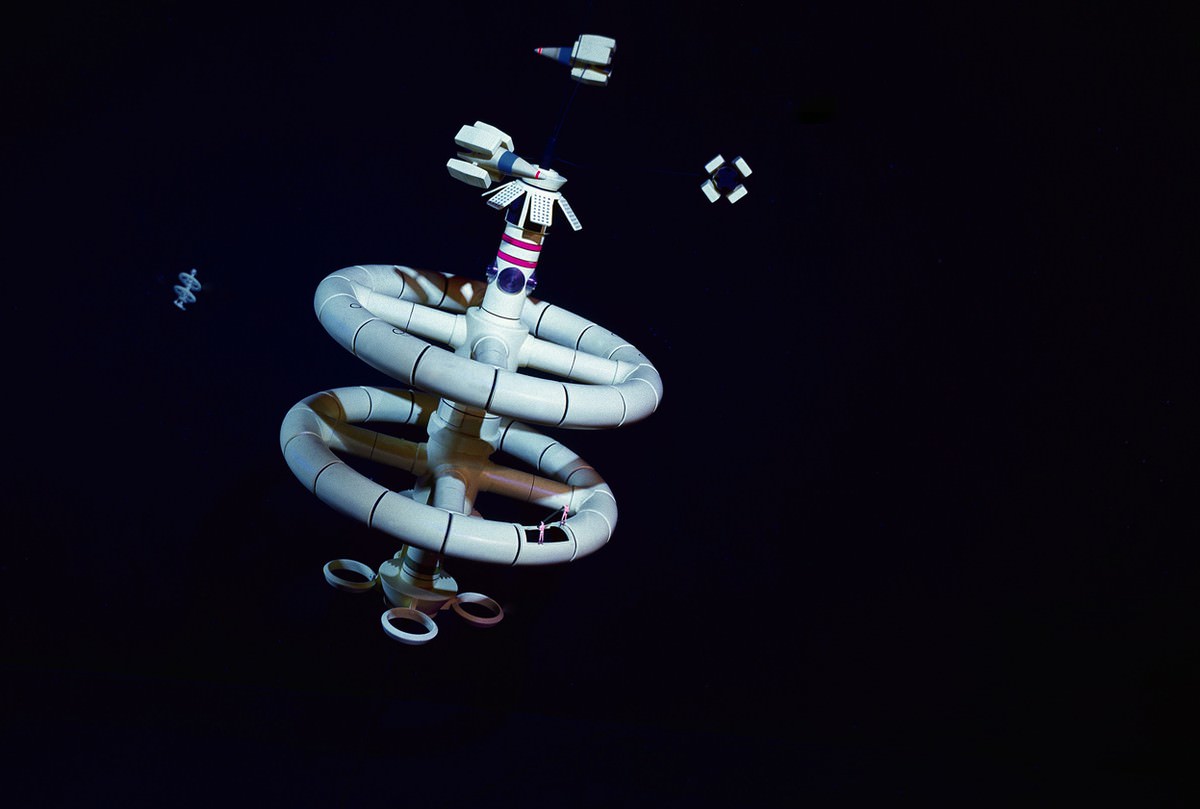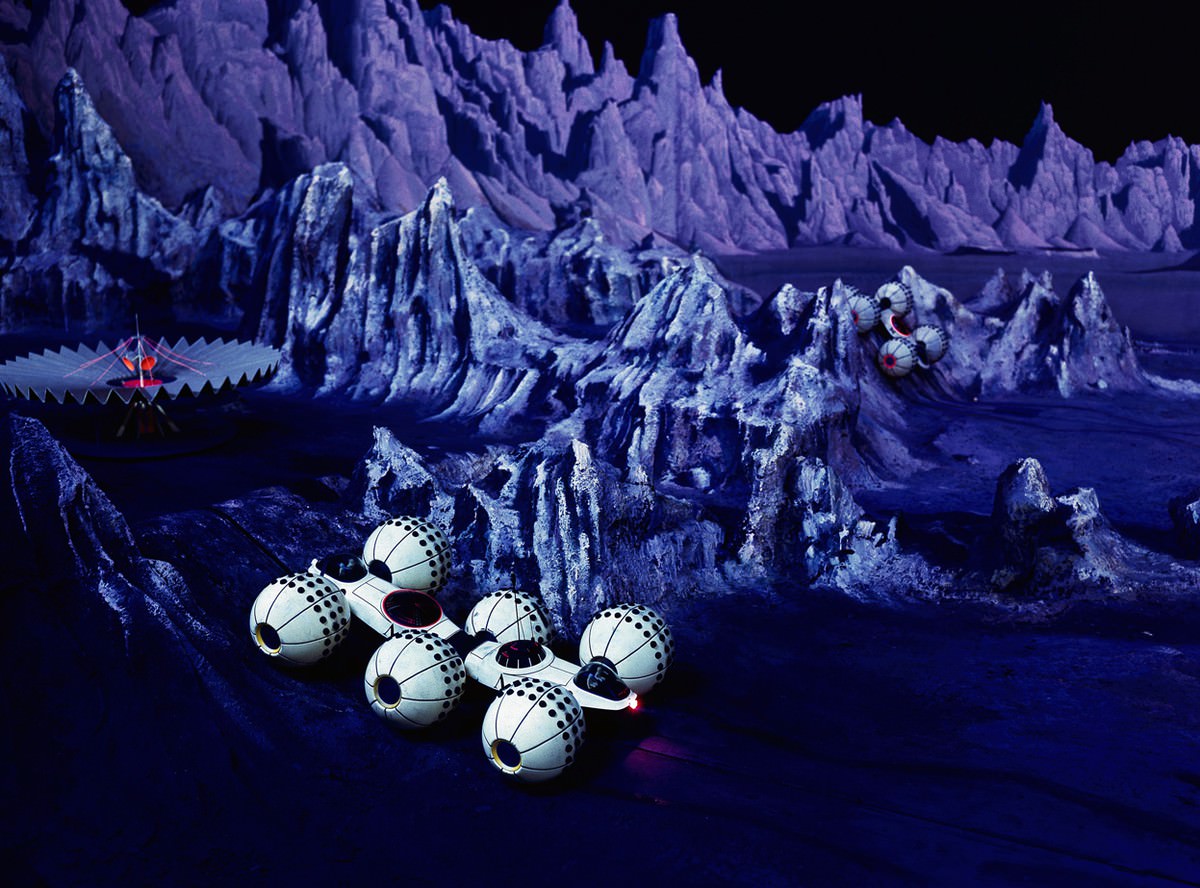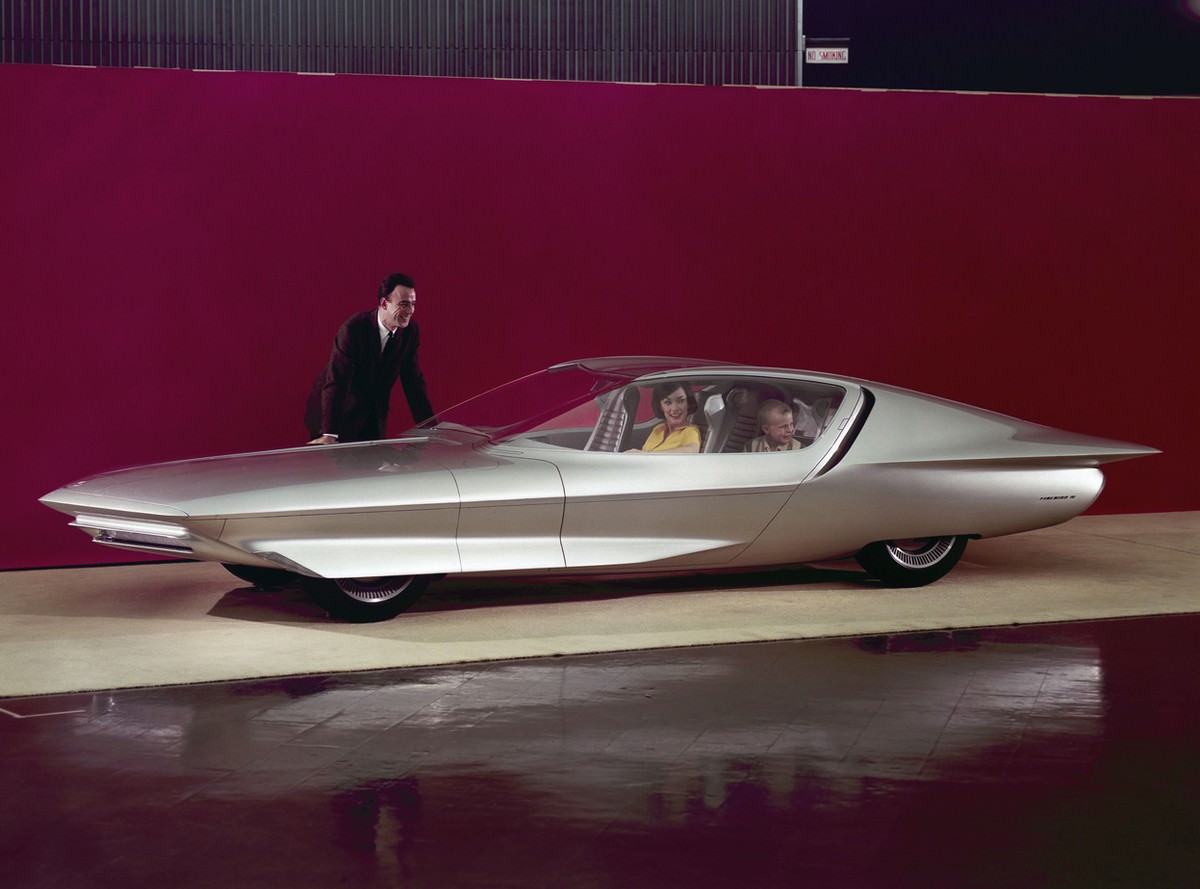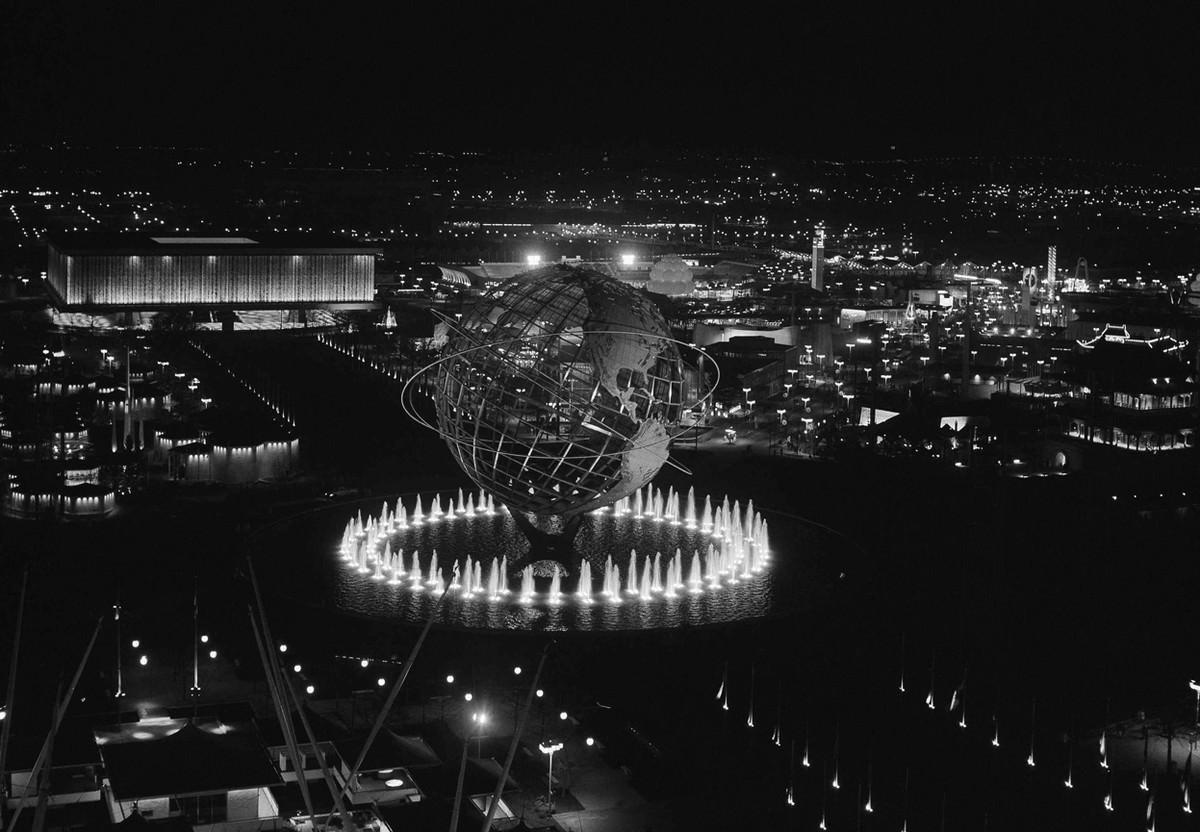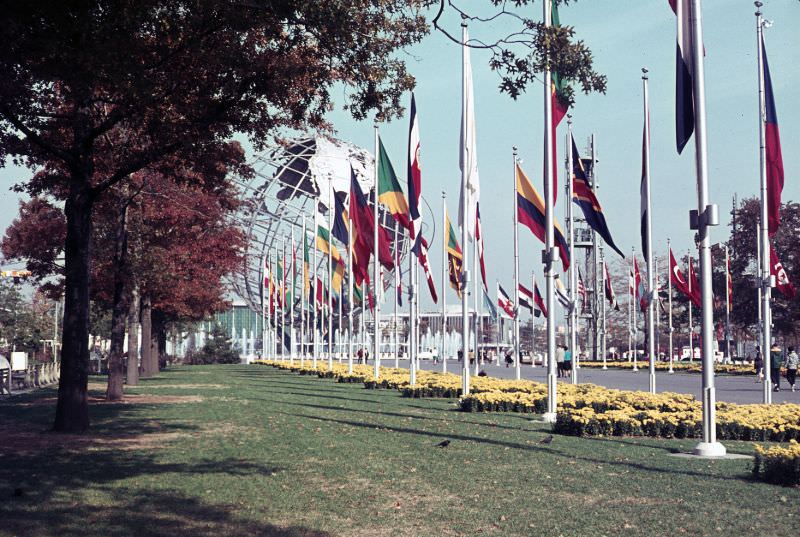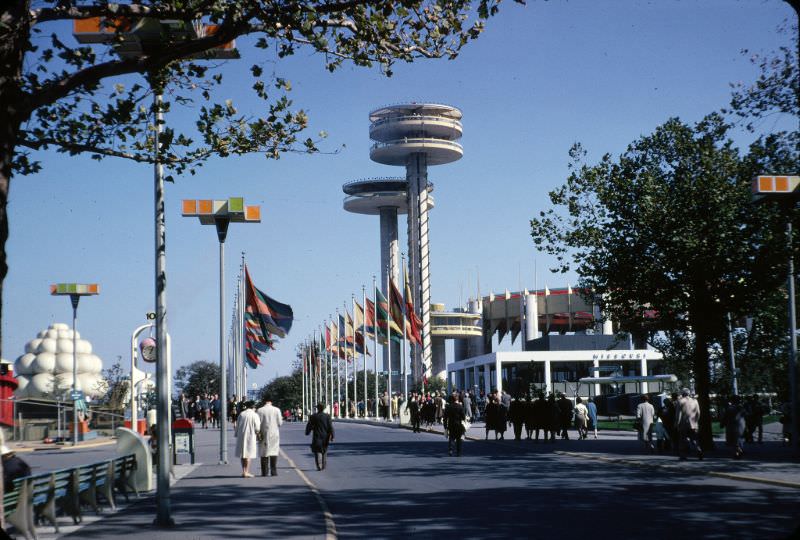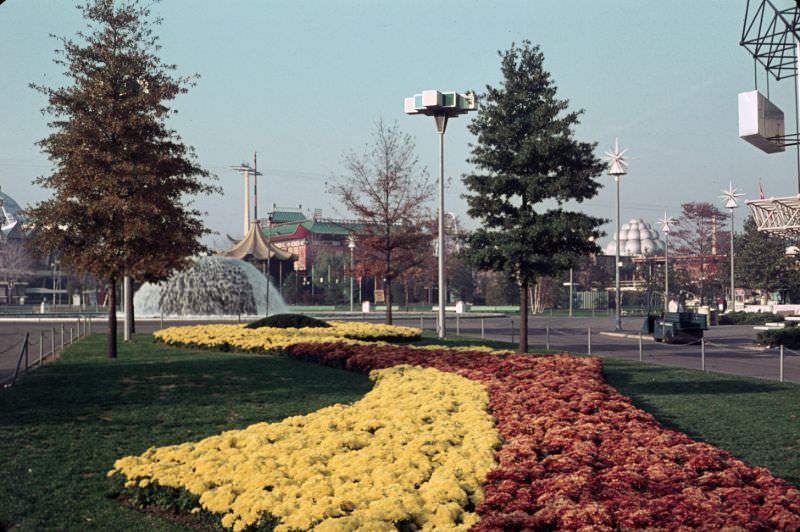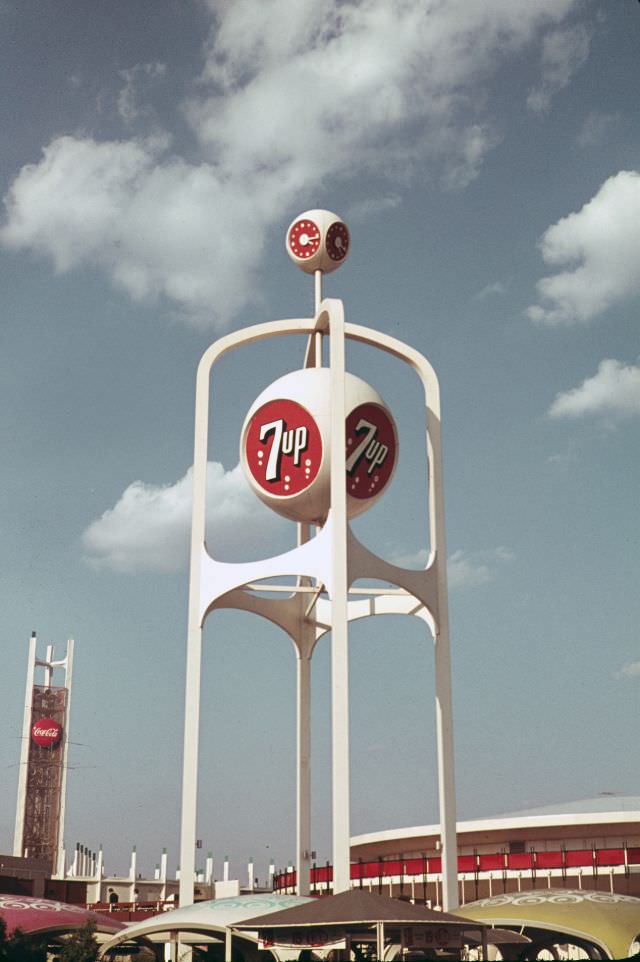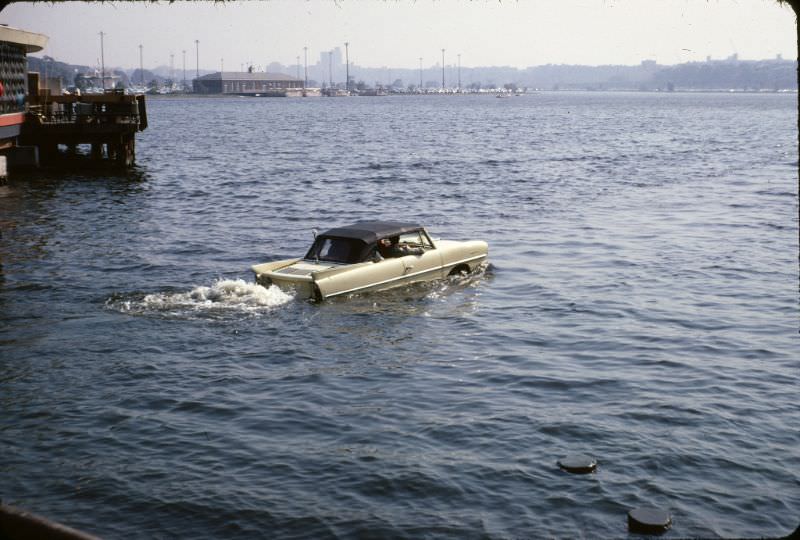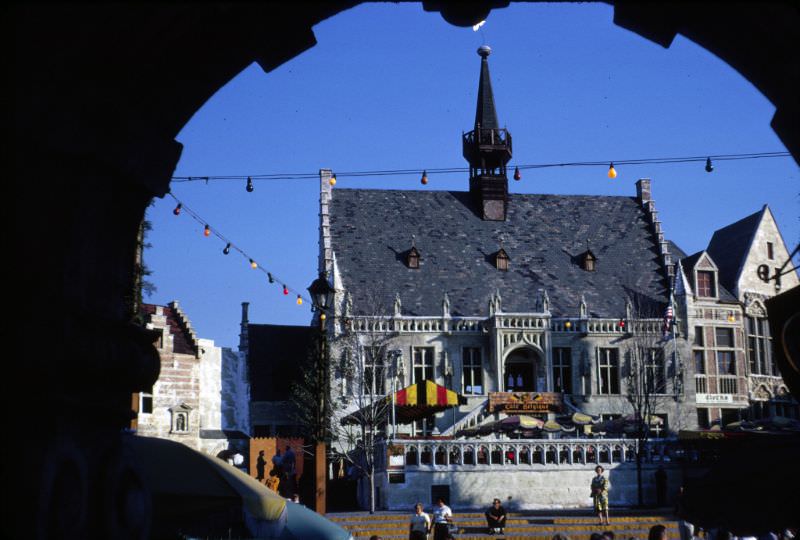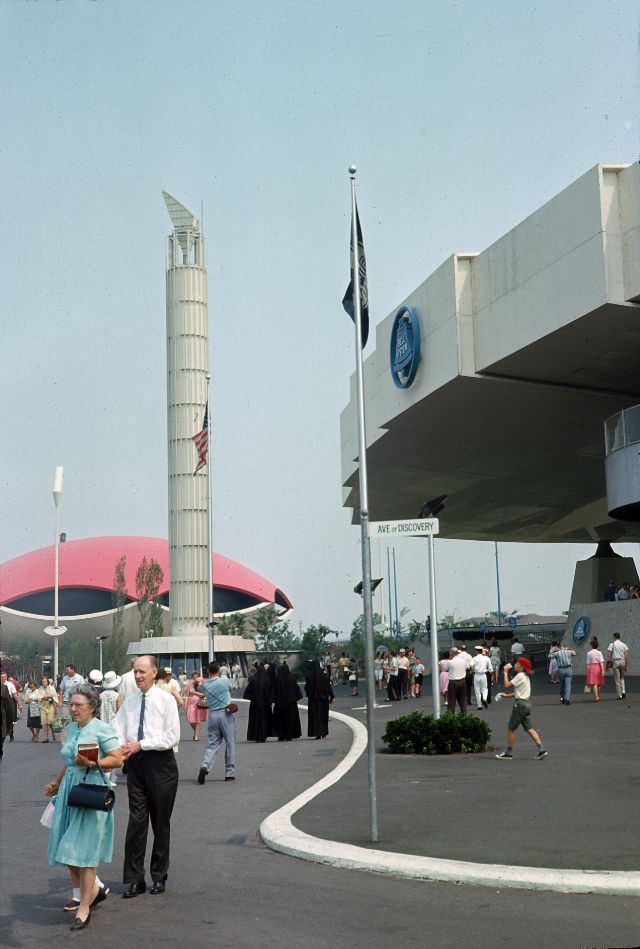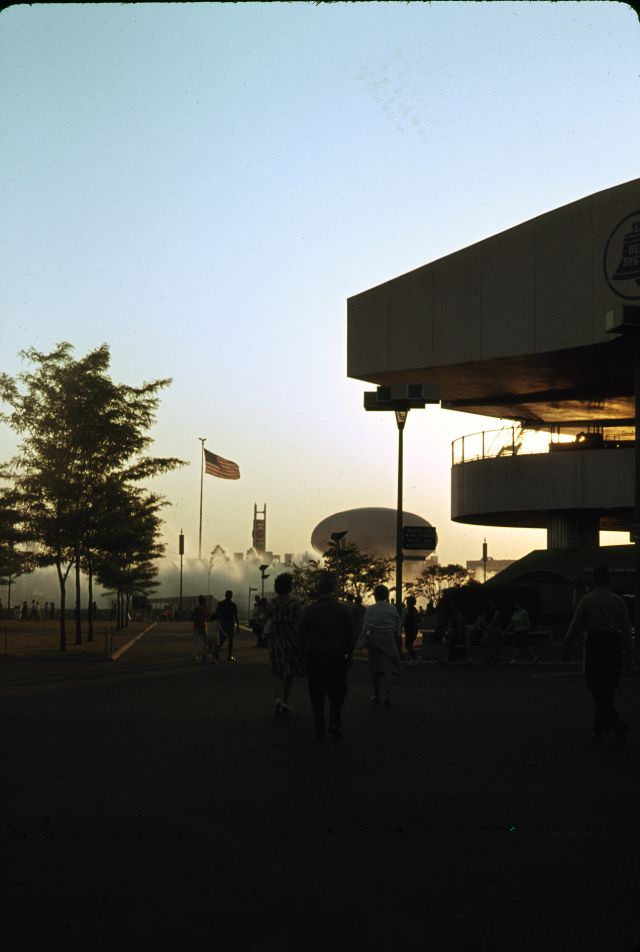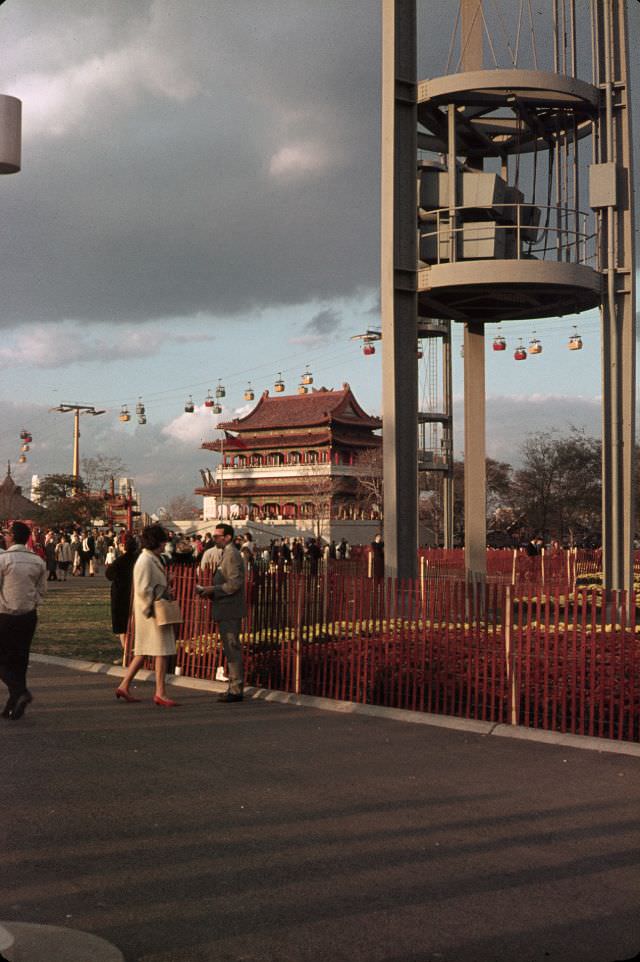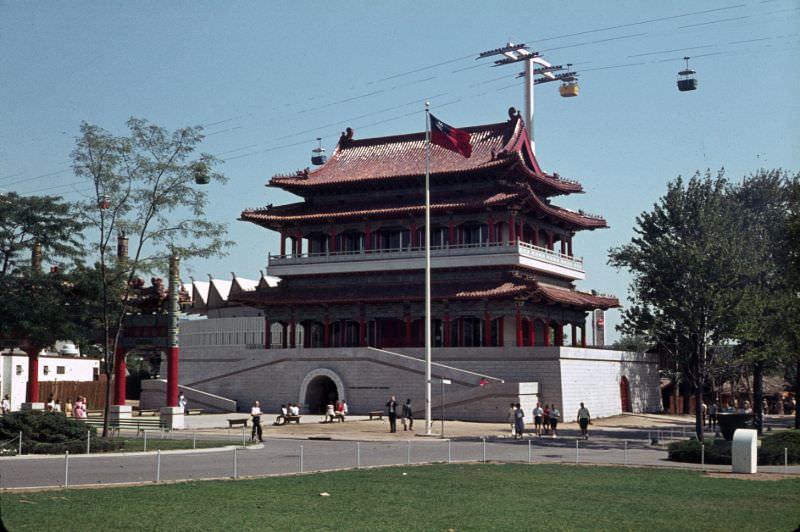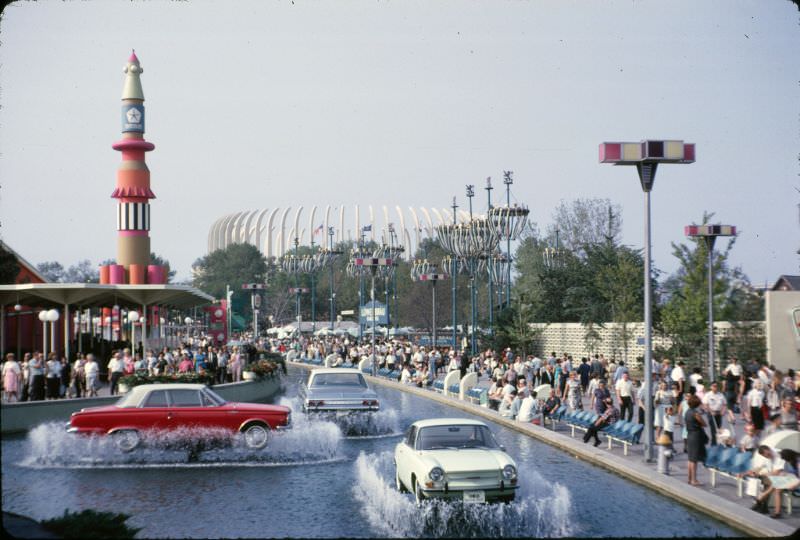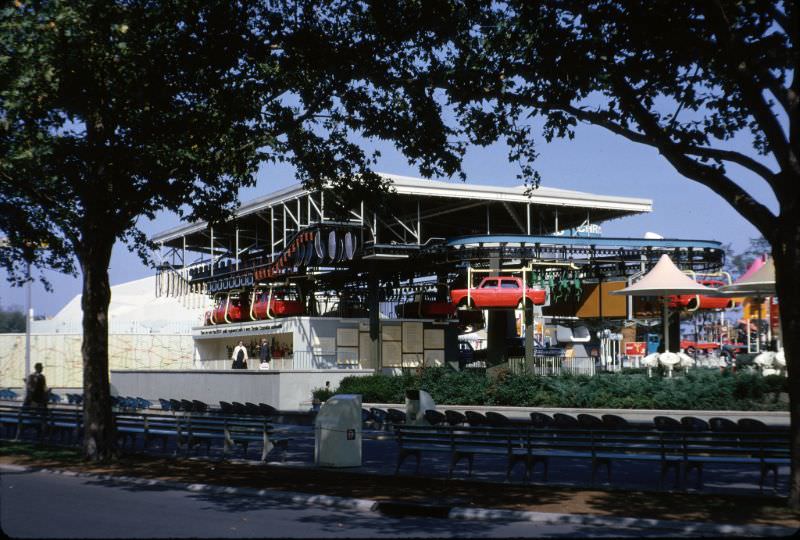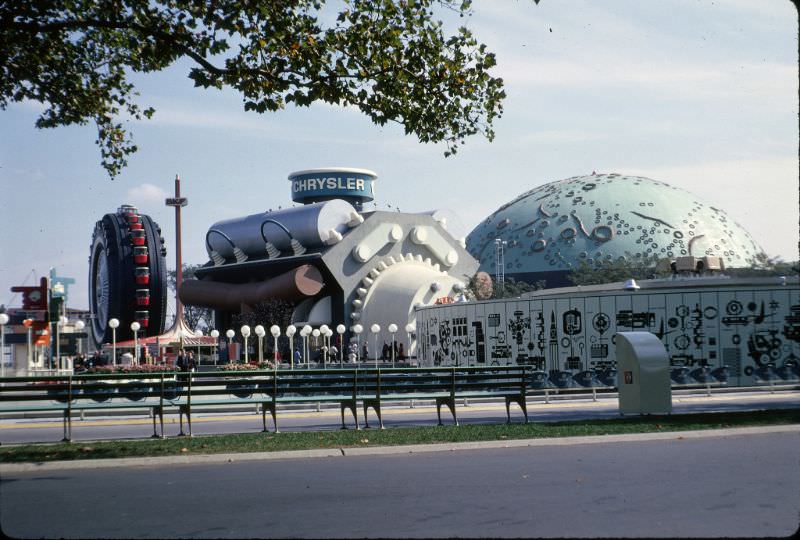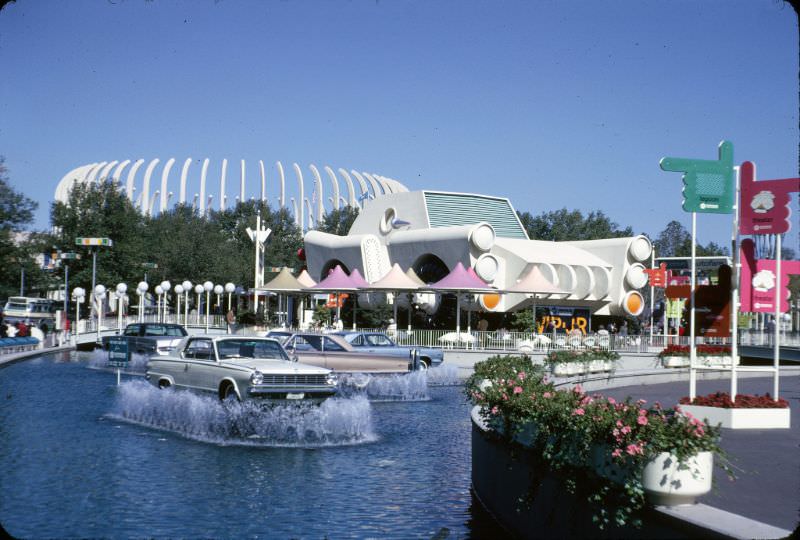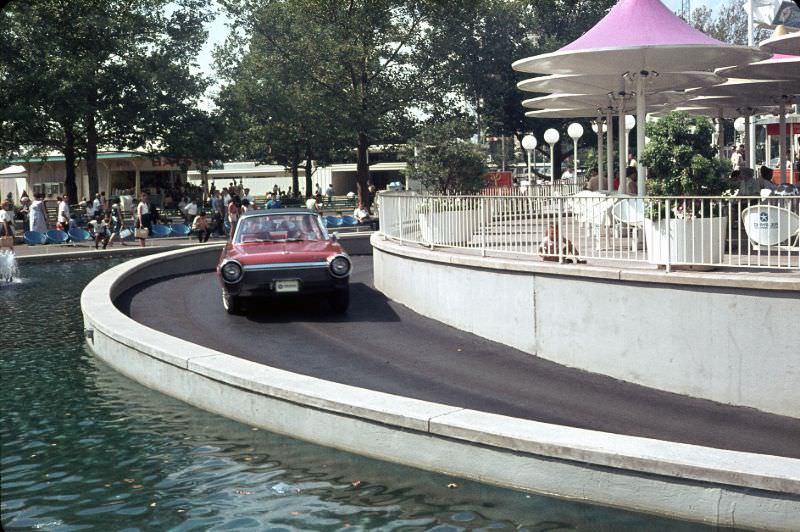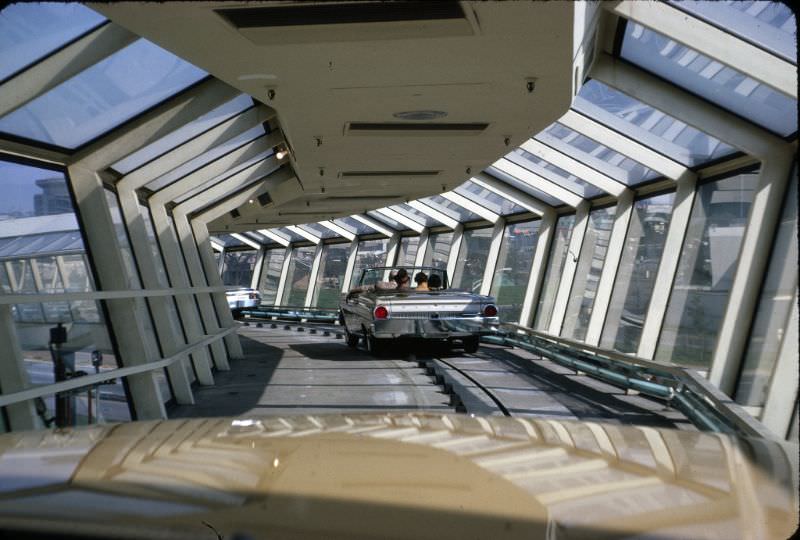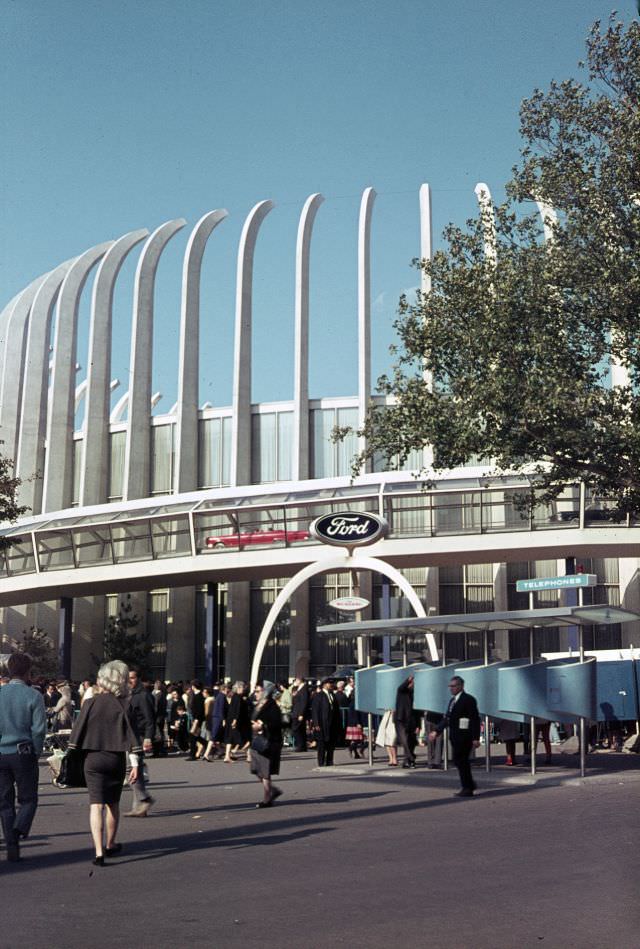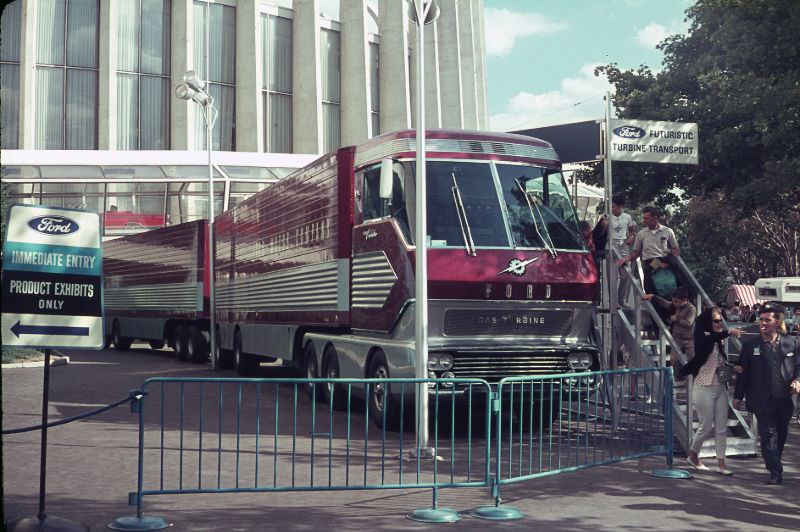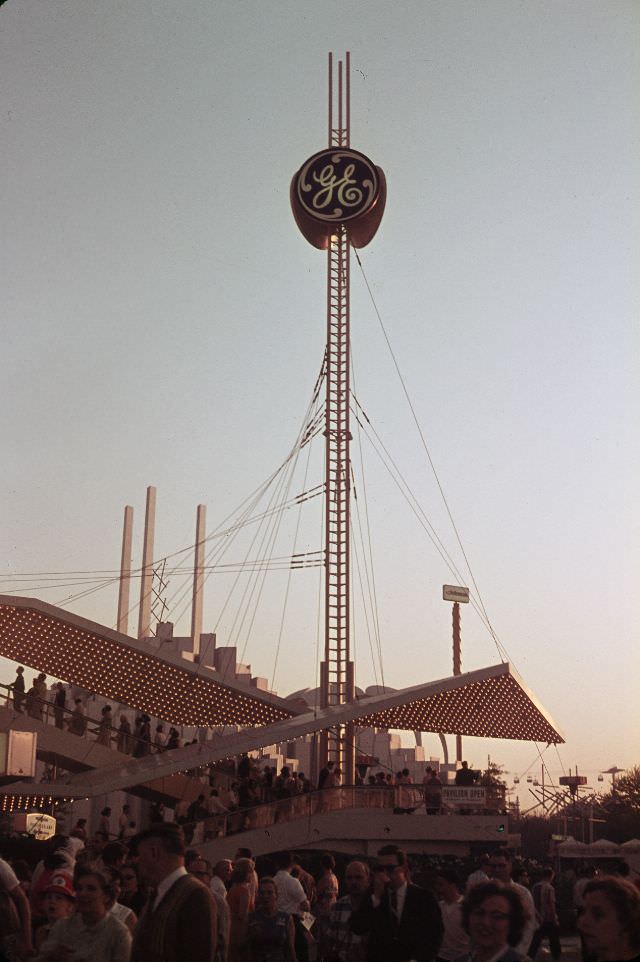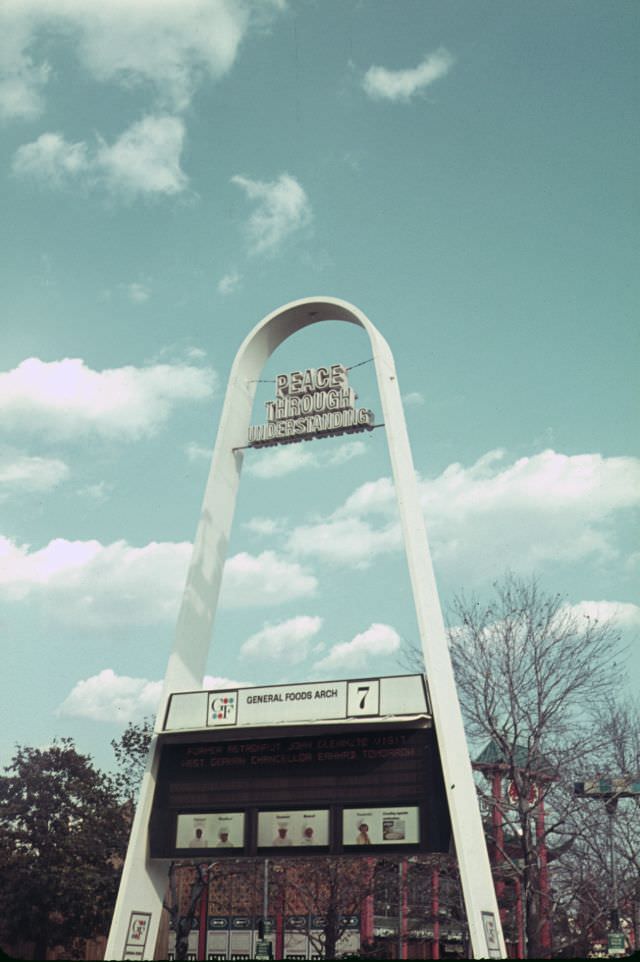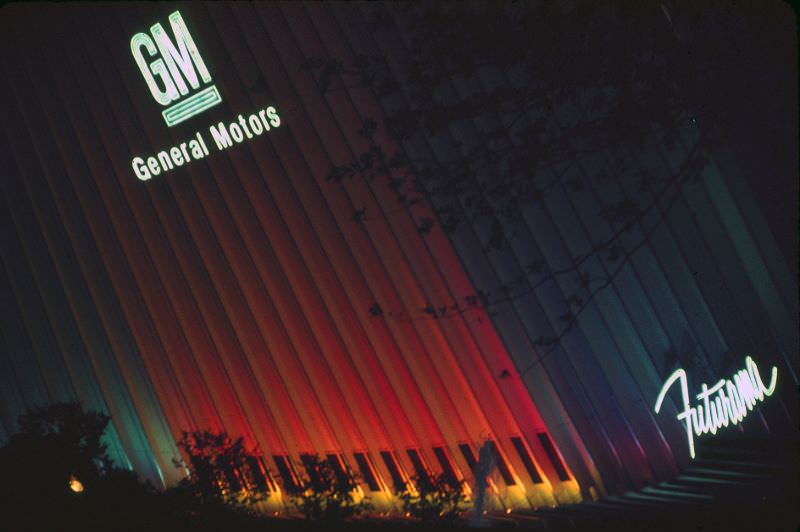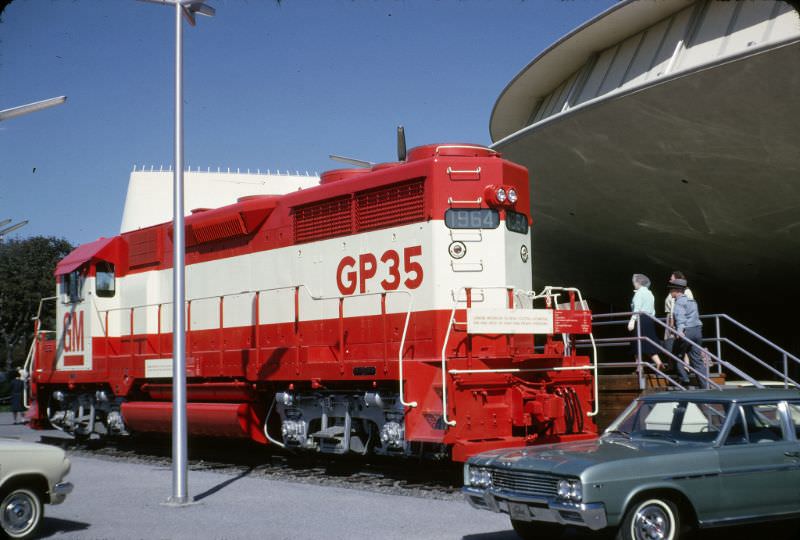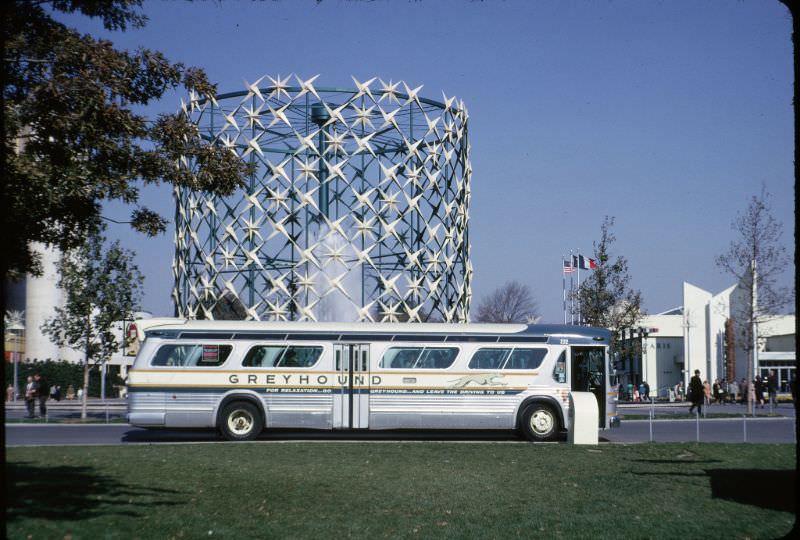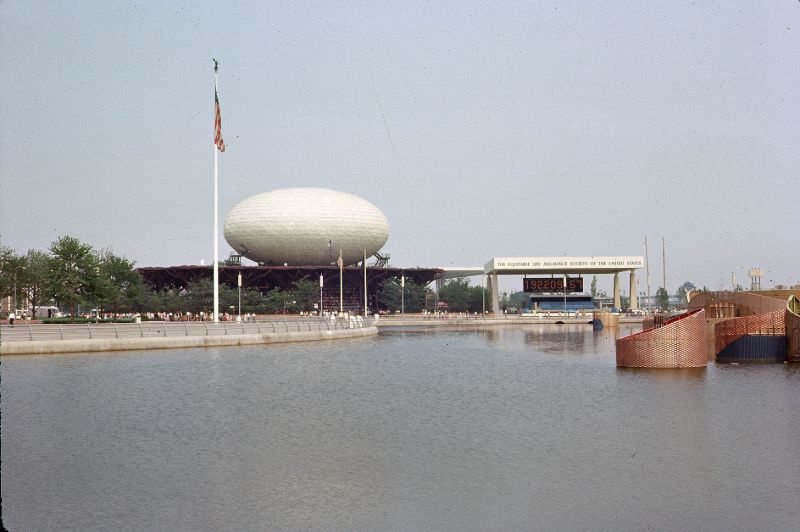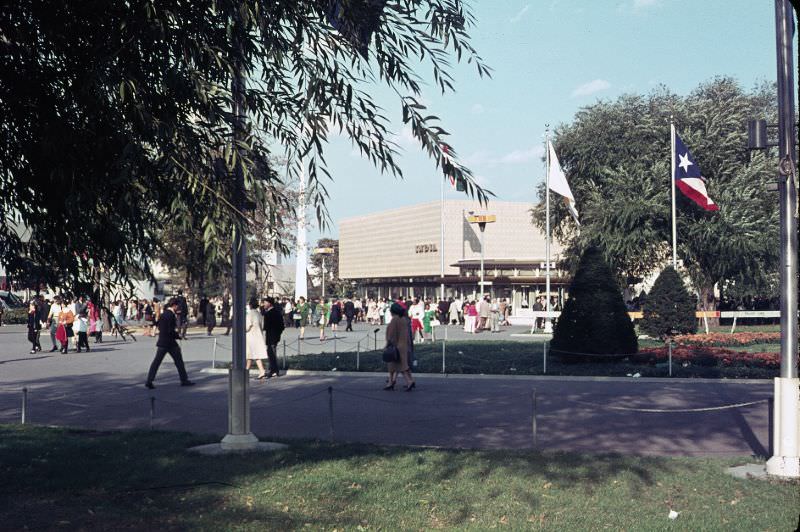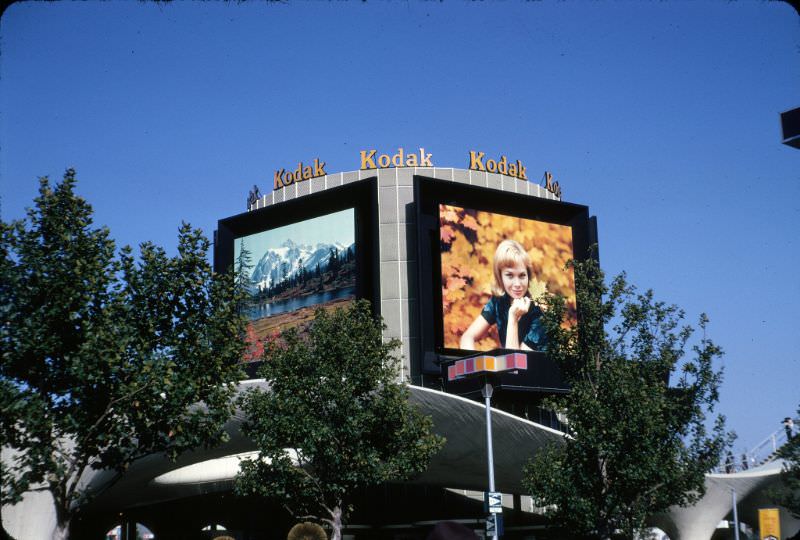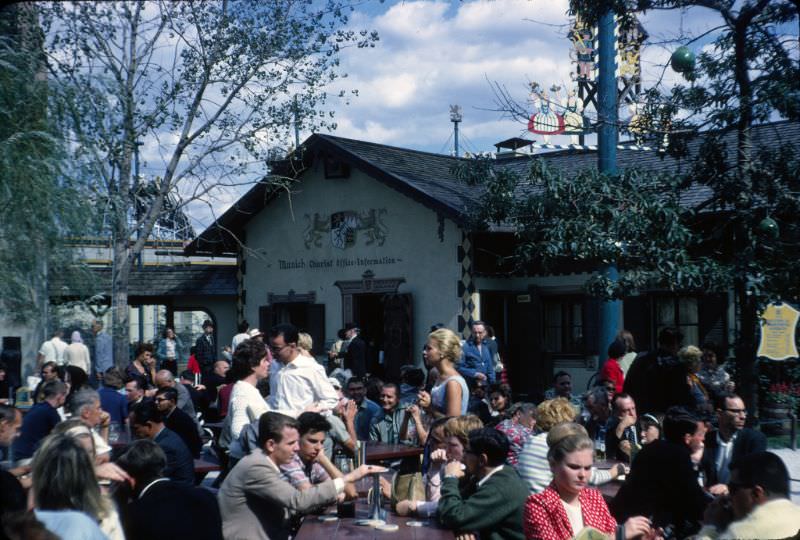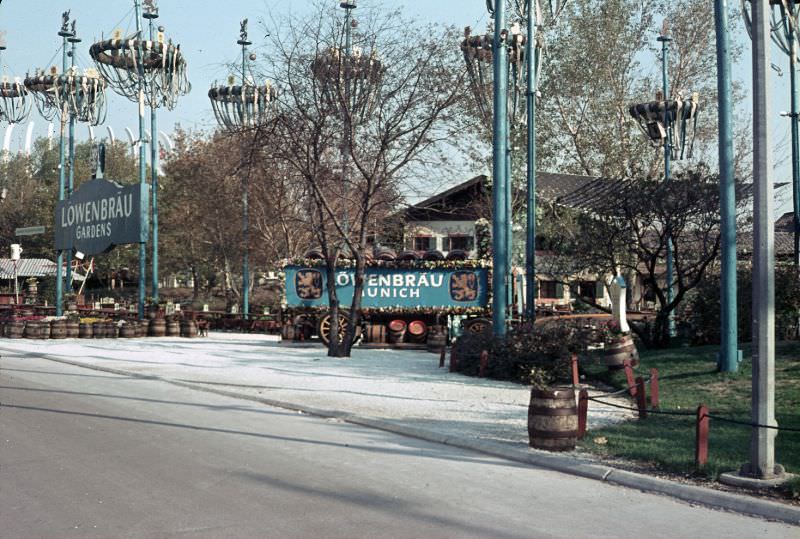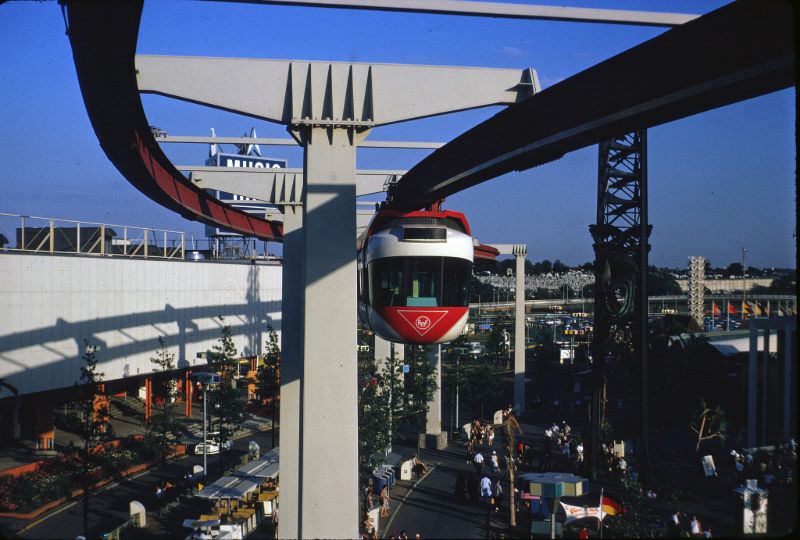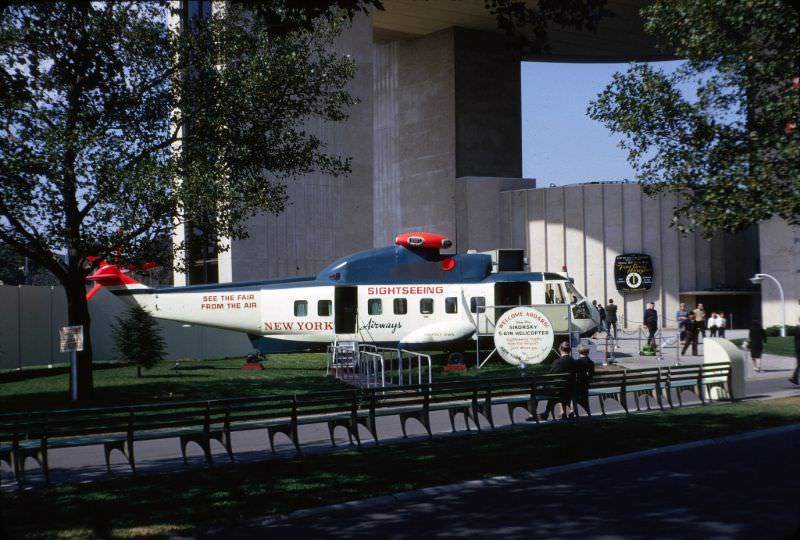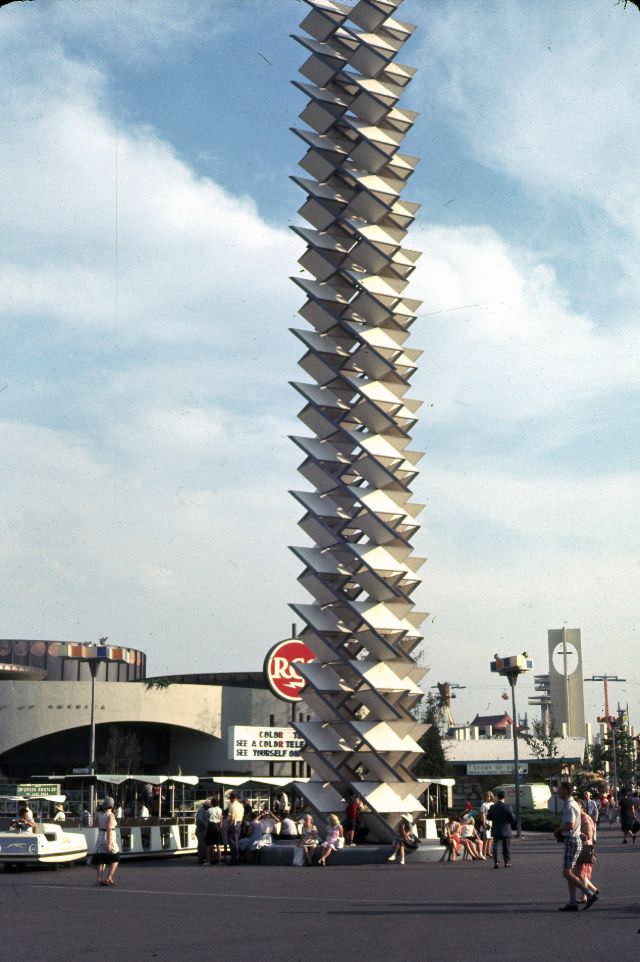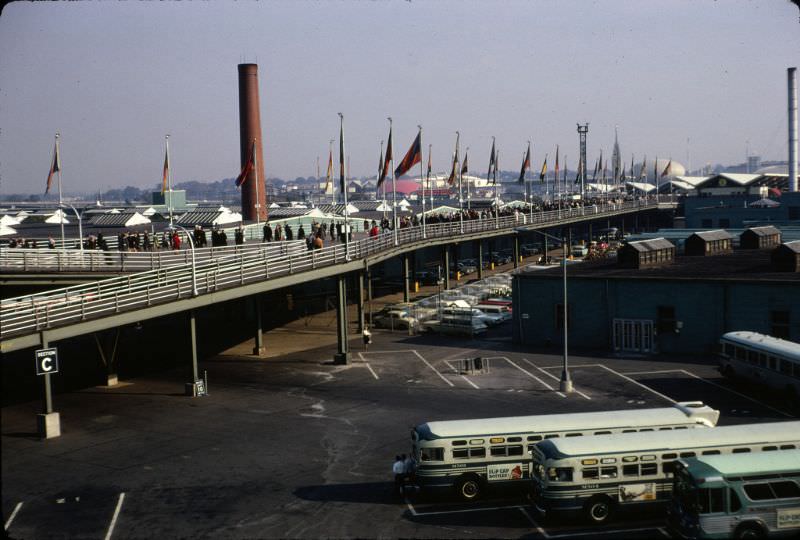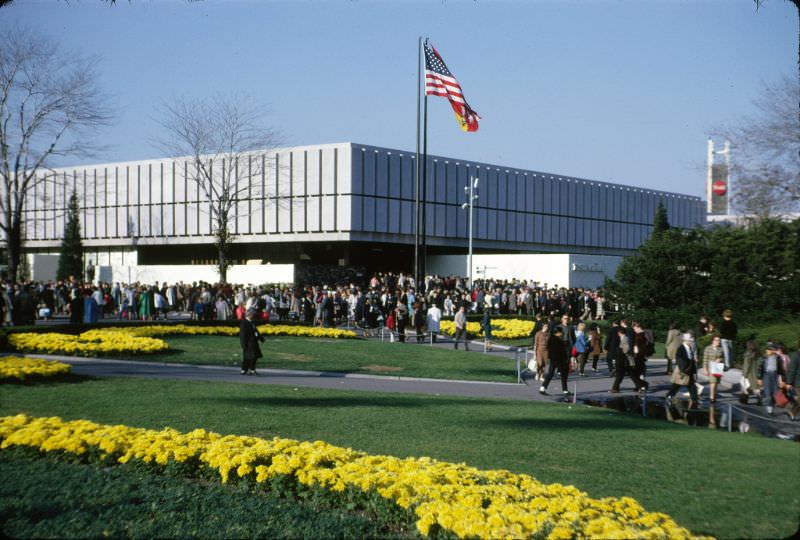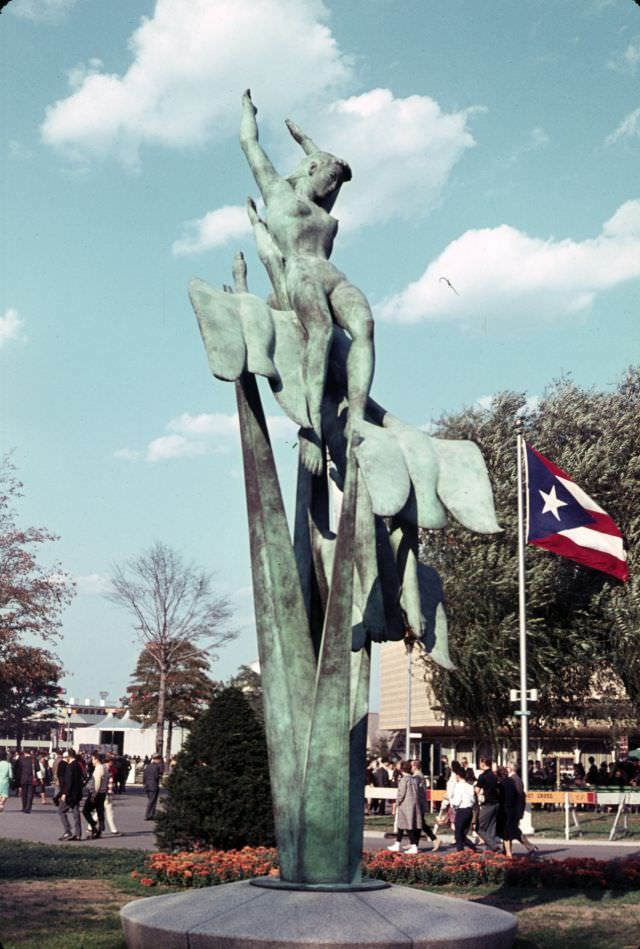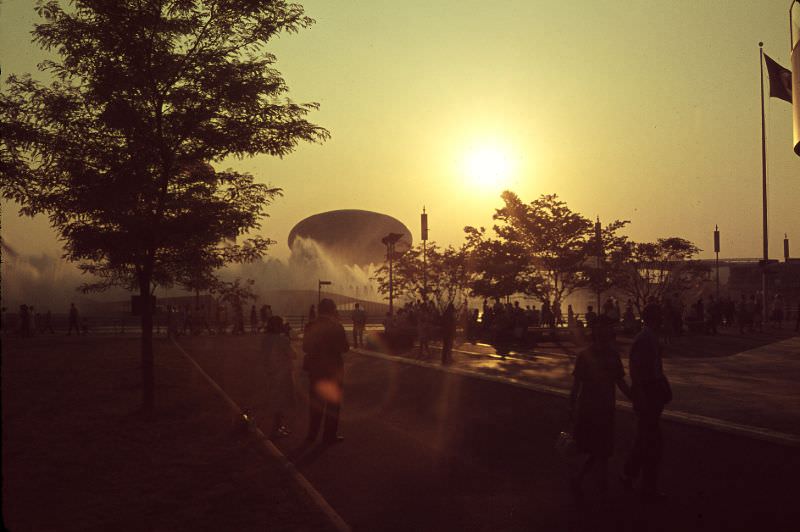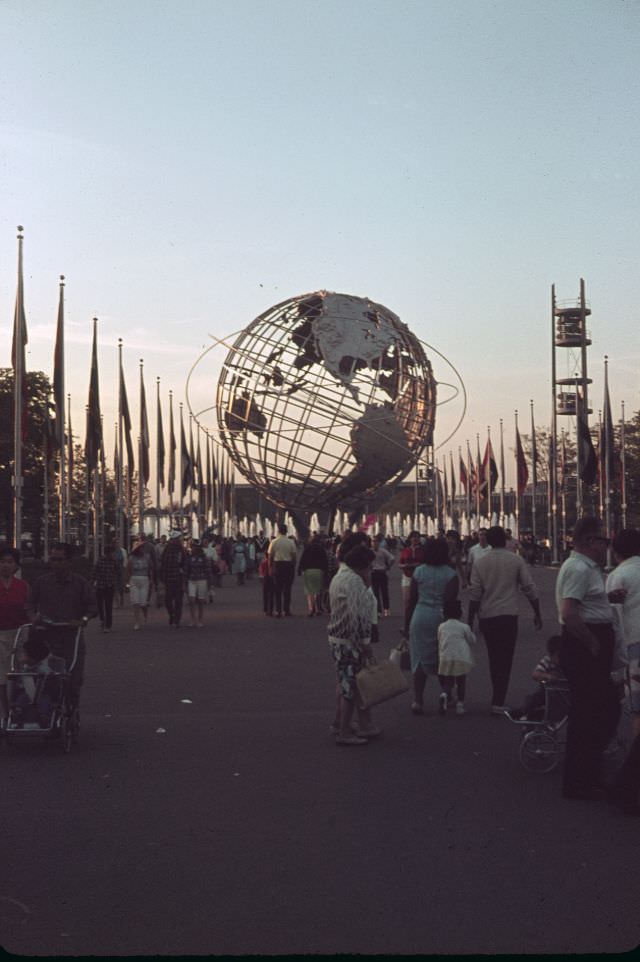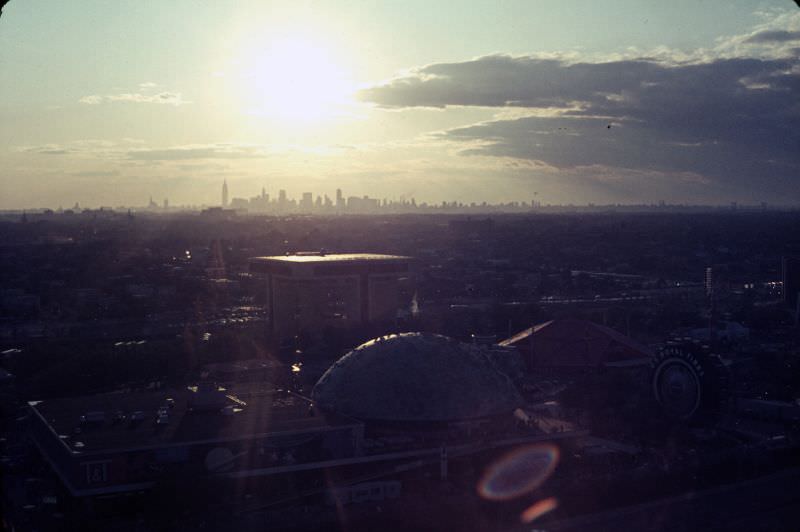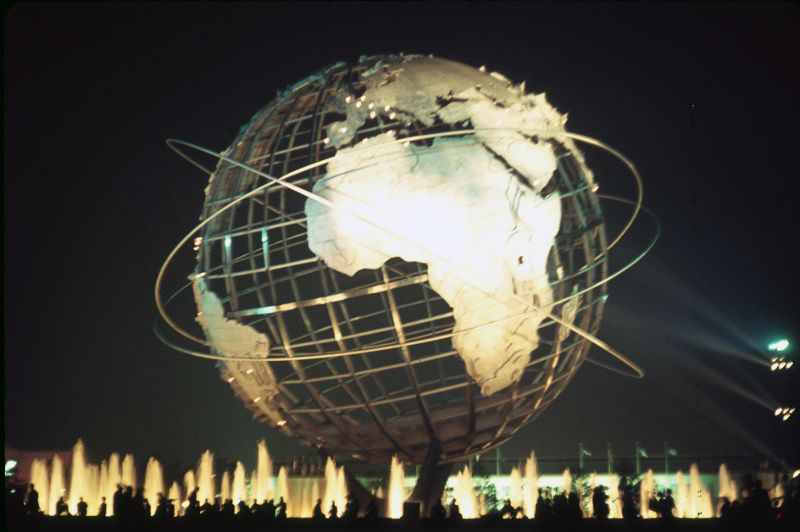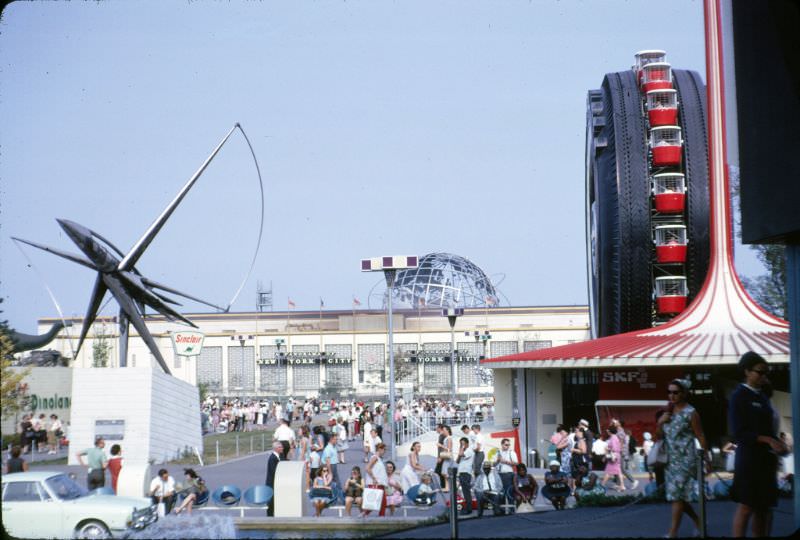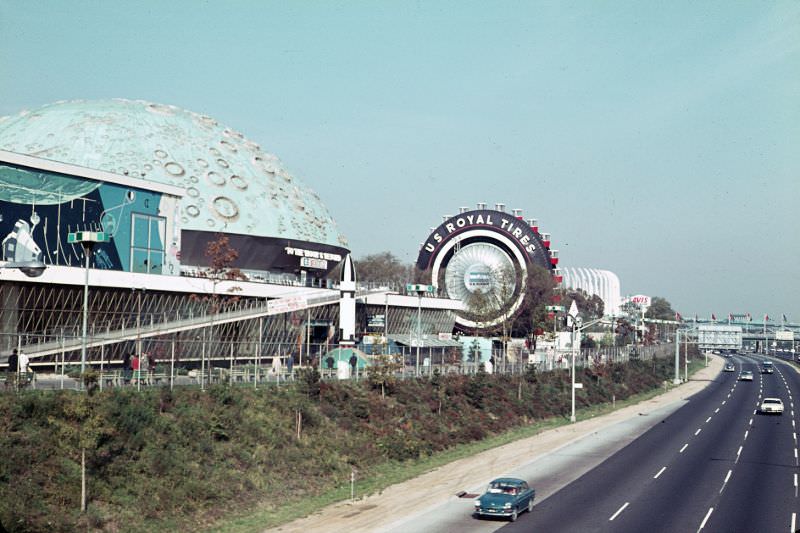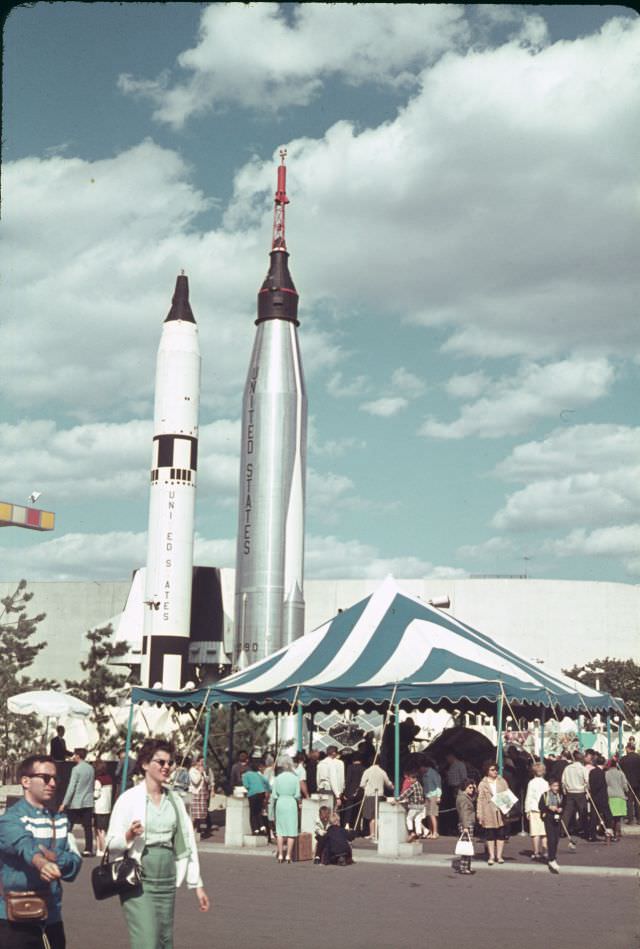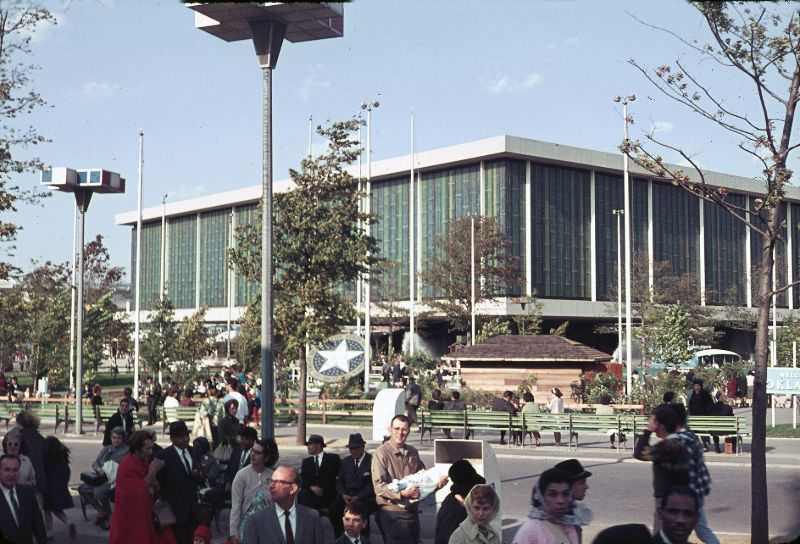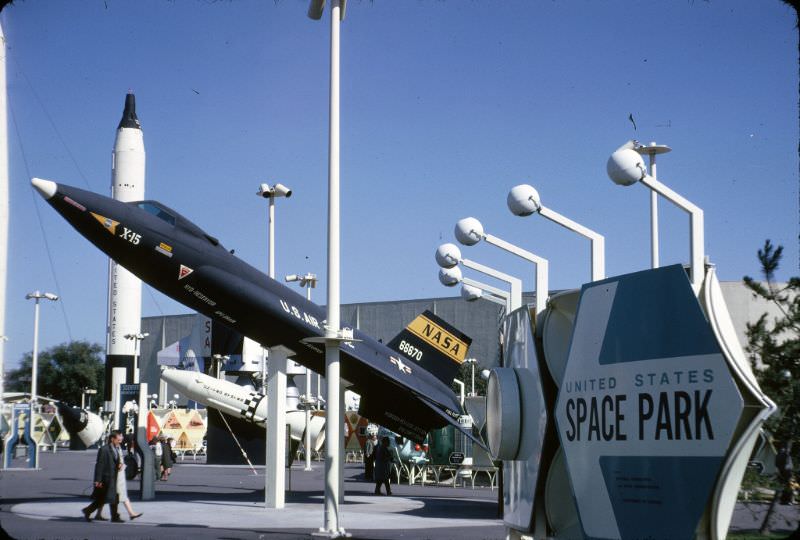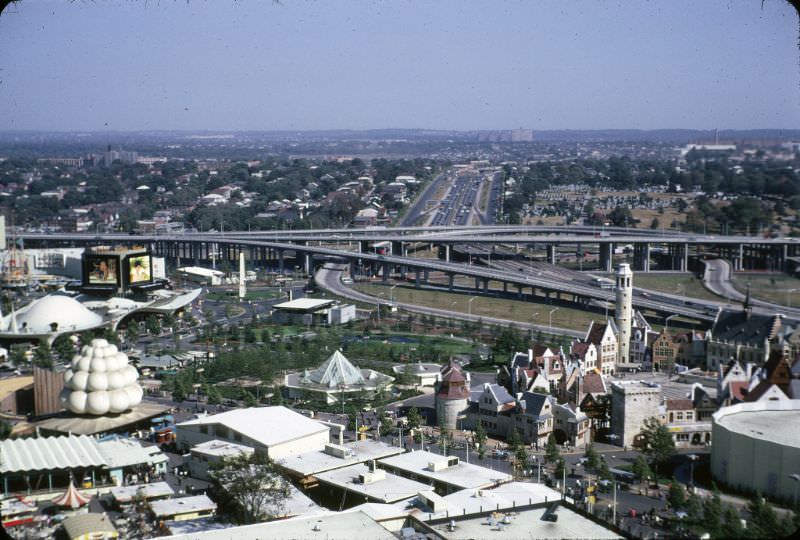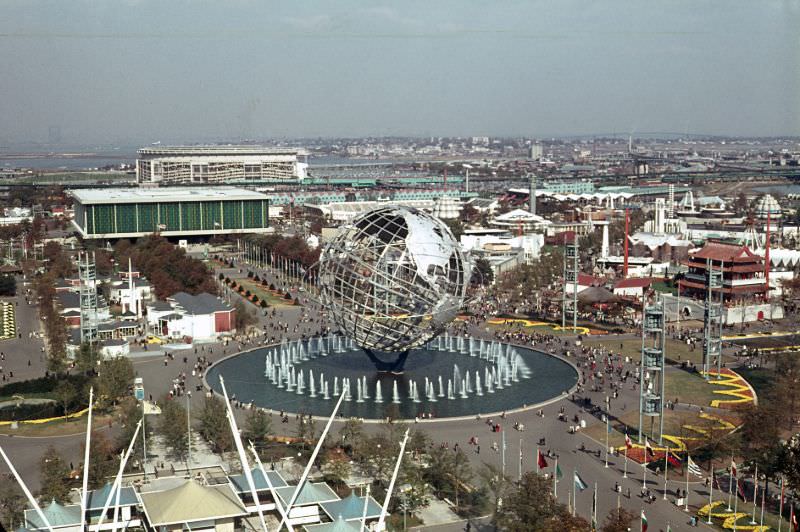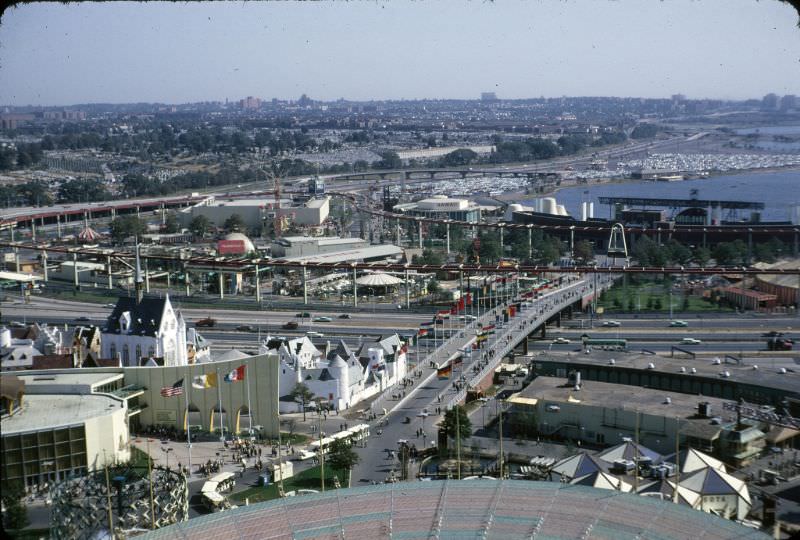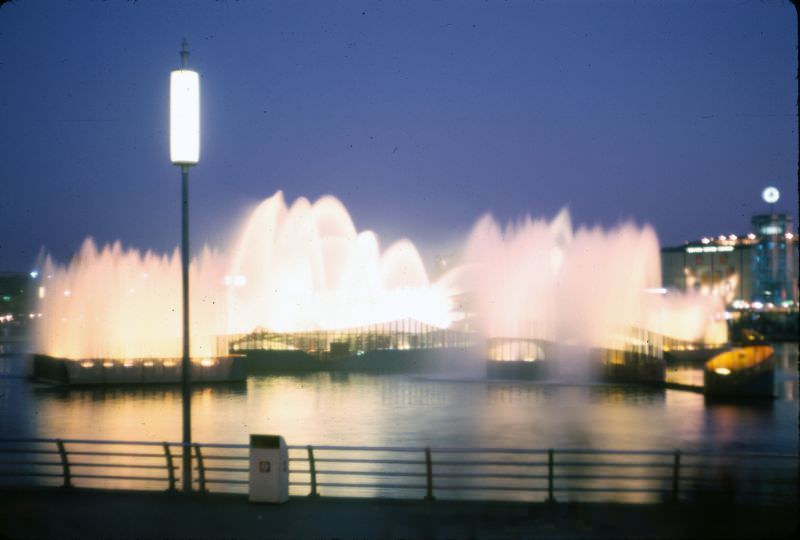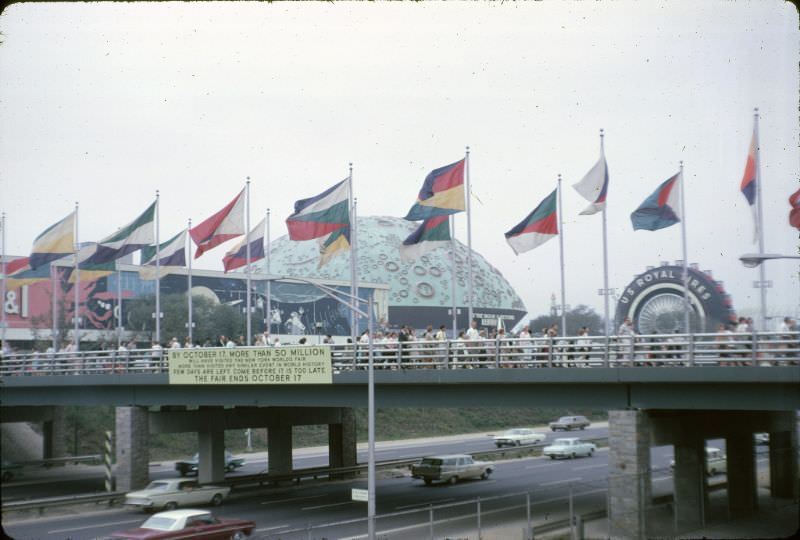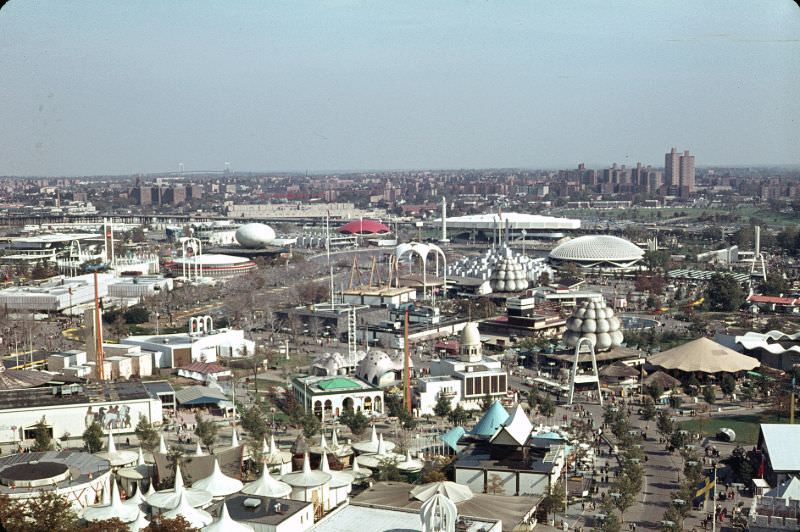New York World’s Fair 1964 took place in Flushing Meadows-Corona Park, Queens, New York City. It featured 140 pavilions and 110 restaurants, representing 80 nations, 24 states, and 45 corporations. The fair served as a showcase of American culture and technology during the mid-20th century. One of the most memorable exhibits was General Motors’ Futurama, displaying colorful and imaginative visions of a futuristic society. With its vista of potential, the nascent Space Age was well represented. The fair attracted more than 51 million attendees but fewer than the expected 70 million. The optimistic exposition remains a touchstone for many American Baby Boomers who visited it as children before the turbulent years of the Vietnam War and what many considered to be cultural changes.
Pavilions in the park were built in a Mid-century modern style heavily influenced by “Googie architecture.” The fair featured a futurist architectural style influenced by car culture, jet aircraft, the Space Age, and the Atomic Age. The US Royal tire-shaped Ferris wheel or the Johnson Wax pavilion, for instance, were pavilions that resembled the products they were promoting. Other pavilions had more abstract shapes, such as the oblate spheroidal IBM pavilion or the circular dome-shaped General Electric “Carousel of Progress.” The pavilion architectures demonstrated newfound freedom of form by using modern building materials, such as reinforced concrete, fiberglass, plastic, tempered glass, and stainless steel. Pavilion facades and entire structures served as giant billboards for the country or organization that occupied the space, vying for the attention of busy and distracted fairgoers.
#1 The Unisphere, the 12-story stainless-steel globe at the heart of the 1964 World’s Fair.
#2 The New York State Pavilion at the New York World’s Fair.
#3 A mantle of snow covers the construction site of the 1964 World’s Fair in New York City on February 19, 1964.
#4 Carpenter Henry Johnson doesn’t seem to concerned about his clutch of prehistoric companions at the Sinclair Oil Exhibit in the World’s Fair grounds, New York City, February 19, 1964.
#5 Jetpack over the Unisphere.
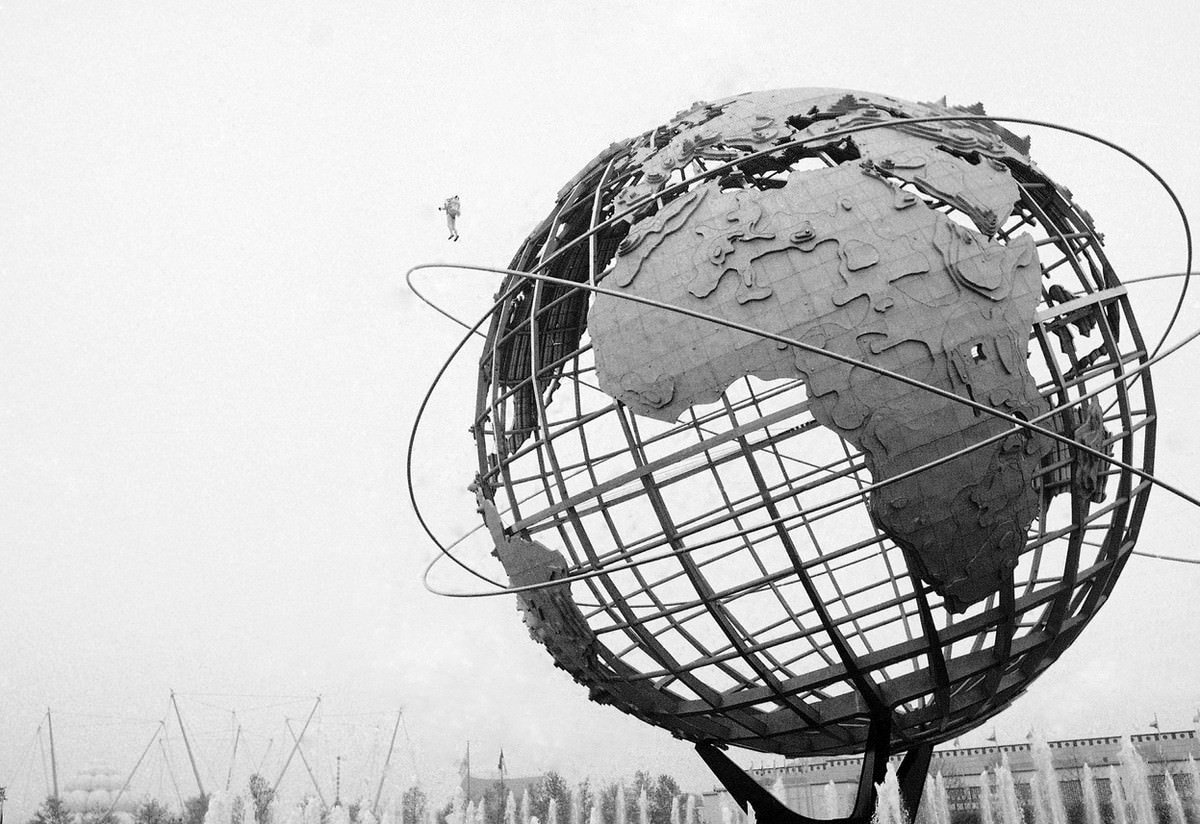
Performer Robert Courter flies past the Unisphere at the New York World's Fair on May 13, 1964 wearing a rocket outfit that was originally developed for the U.S. army. The outfit, according to its manufacturer, can fly a distance of 815 feet at speeds of 60 miles an hour. Courter performs in the "Wonder World" musical at the fair.
#6 The Swiss sky ride at the New York World’s Fair on April 23, 1964.
#7 A prehistoric monster stands within sight of a 20th century rocket on April 9, 1964, symbolic of the pageant of world history presented by various exhibits at the New York World’s Fair.
#8 Upon arrival at the fair, most visitors look for the highest vantage point to take in the vast panorama of the grounds in New York, May 12, 1964.
#9 Actress Shirley MacLaine rides the New York subway on her way to the World’s Fair for the premiere of her film “What A Way to Go” on May 13, 1964.
#10 Visitors attend the New York World’s Fair on the first Sunday the fair is open to the public in Flushing, Queens on April 26, 1964.
#11 An audio-animatronic Abraham Lincoln.
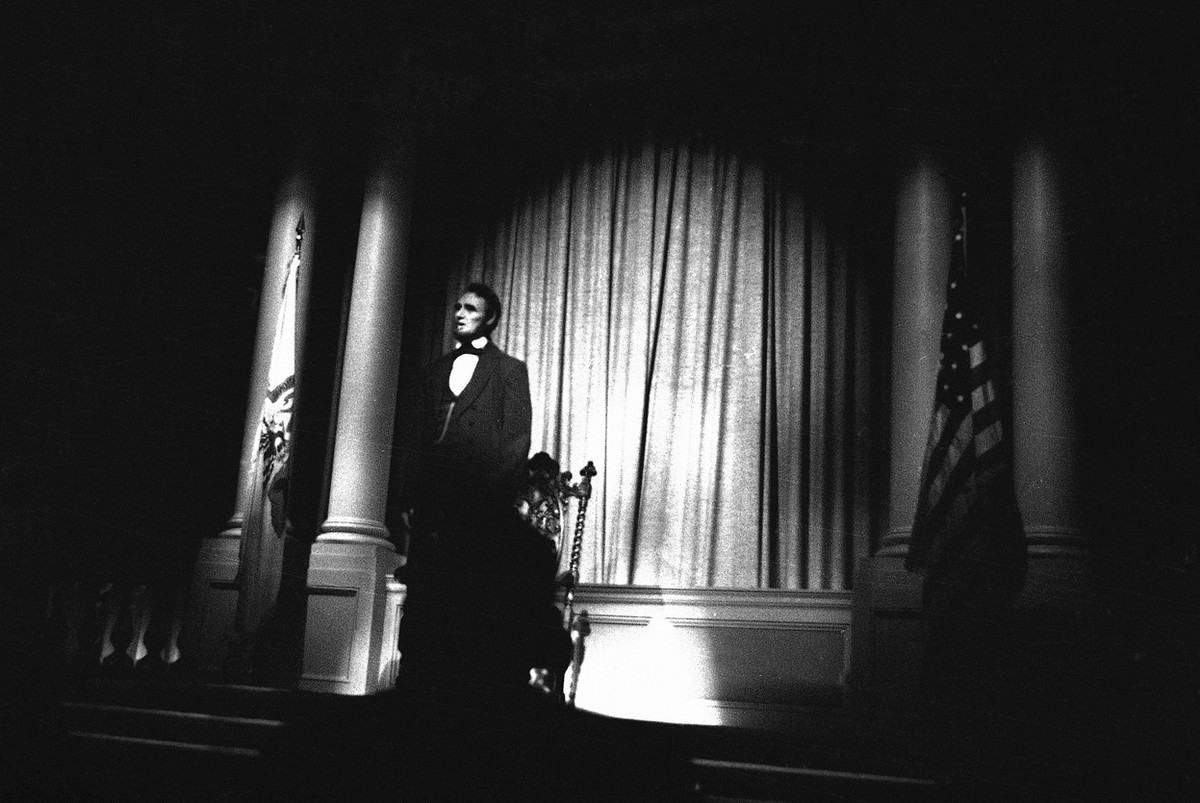
In his familiar dark suit with facial features based on an actual mask of the President rises from a seated position at the start of a nine-minute performance and walks toward the audience at the Illinois Pavilion at the New York World's Fair, May 15, 1964. The six-foot 4-inch figure was created by Walt Disney.
#12 General view of the New York World’s Fair taken from the New York State tower on April 27, 1964.
#13 A futuristic grocery shopping trip, envisioned at teh General Motors Pavilion at the World’s Fair, New York in 1964.
#14 A future vision of the American Southwest in the Futurama exhibit in the General Motors Pavilion.
#15 Santa Maria entertainment area
#16 President Lyndon B. Johnson is flanked by Lady Bird Johnson and Norman K. Winston, as he walks through the New York World’s Fair grounds, May 9, 1964.
#17 Michigan Governor George Romney and his son, Mitt, look out over the New York World’s Fair grounds.
#18 One many displays designed to brief youngsters on the fundamentals of atomic energy at the Atomic Energy Commission’s “Atomsville, U.S.A.”, this one demonstrates relative weight.
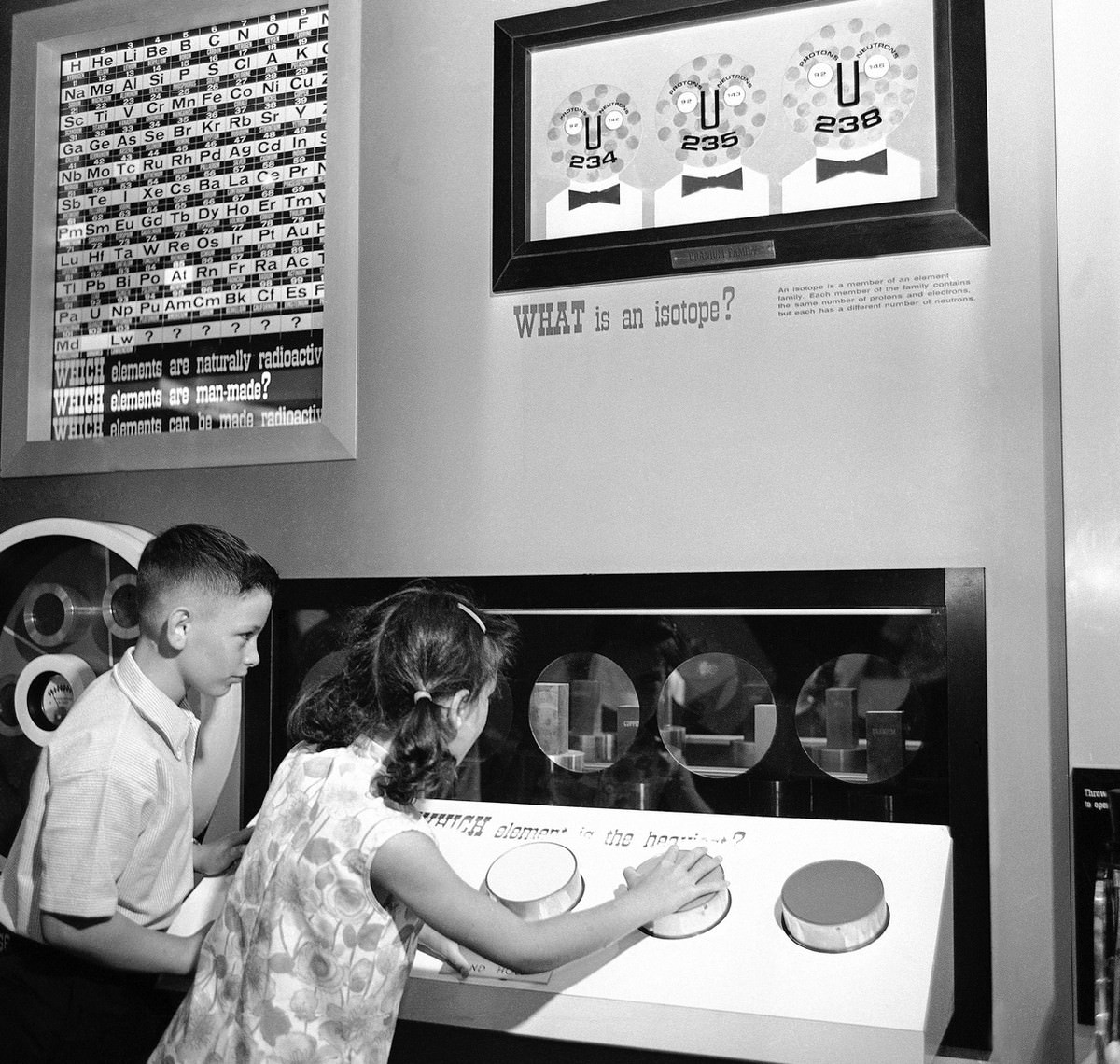
By pushing the oversize buttons connected to equal size cubes of different elements behind the portholes, the children learn that size and weight of copper, Iron, lead and uranium blocks are deceiving. Uranium is ten times as heavy as the same size block of aluminum. Atomsville was the AEC's exhibit for children at the World's Fair Hall of Science pavilion.


